The post Is this Our Last Conversation? appeared first on The Way of Conscious Death.
]]>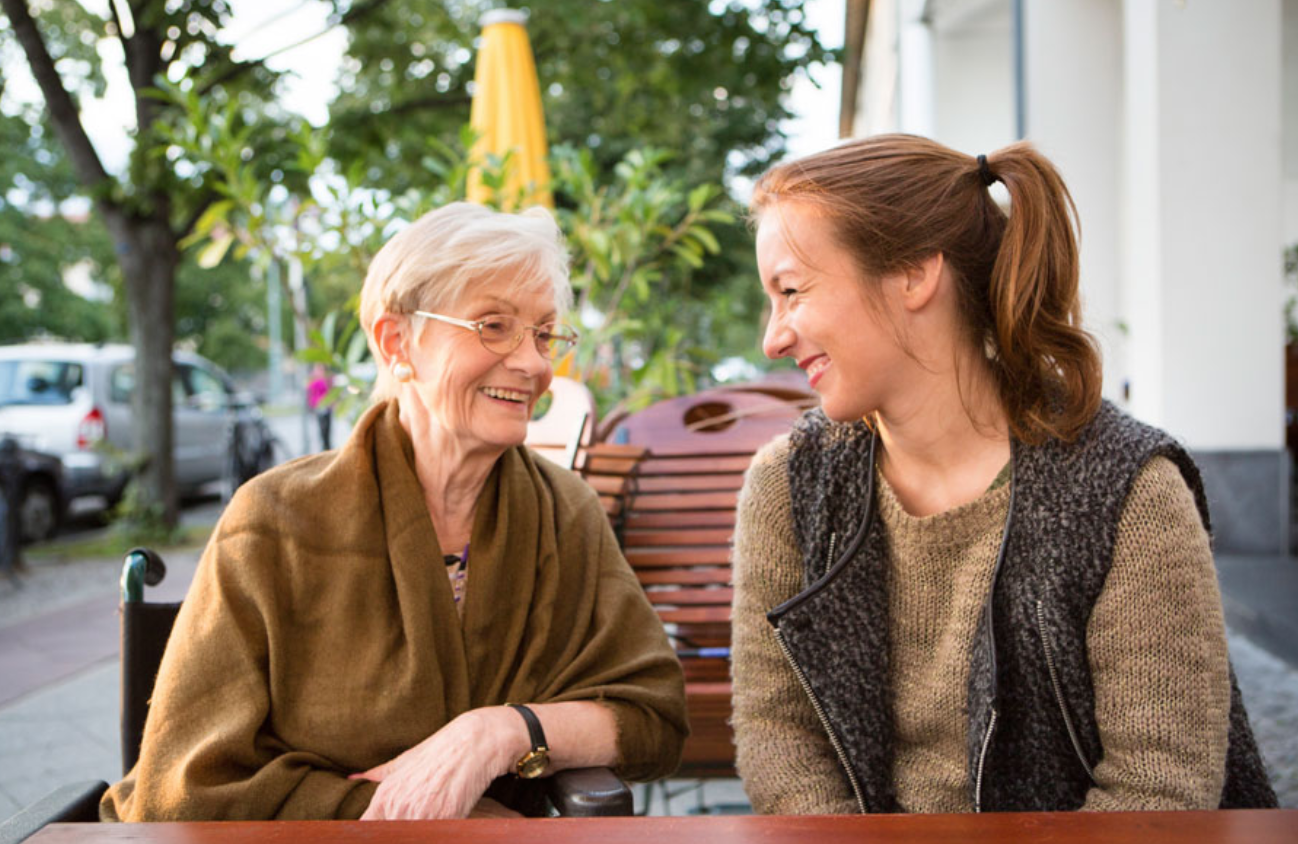
I visited her sun-dappled living room every Tuesday afternoon. Each time, I nestled into the same spot on her beige leather couch, legs curled up beneath me, and she wheeled her chair opposite me so that we could clearly look into each other’s eyes.
And we talked.
We talked about the crises of our contemporary world; we talked about puppies and kittens. She recounted stories of her childhood on a faraway farm and of her great-grandchildren being birthed and growing into toddlerhood. Time after time, I listened as the wisdom she shared was carved into my heart to be resurrected each time I needed to remember what is true to me about marriage and family and love.
During the first weeks of our relationship, her voice always sounded clear. Gradually, she developed her “frog”. “Amy,” she told me, “This comes once or twice a day, but I can always clear it”; and she did.
One Tuesday, though, the frog would not clear. I arrived and asked, “How are you feeling today?” She hesistated and said, “I hate to say this, but not very good. I just cannot get rid of this frog.” Our talk that day was filled with long silences as she struggled to communicate. Several times, she grew frustrated at her inability to share something significant. And as I left, she said, “I hope next week I’ll be rid of this frog.”
Driving home, I wondered if that had been our last conversation. Her disease was killing the motor neurons that controlled the muscles used to move different parts of her body — including her throat and mouth. It takes a different course in each individual but usually includes robbing them of their capacity to speak.
I felt words arise from somewhere deep inside me and escape through my own tightening throat; I said aloud to the empty car, “I may only hear her voice again in my memory.” That seemed unlikely, because her decline had not been rapid thus far. Surely we would talk again the following week, even if her words were fewer and our shared silences longer.
That was not what happened. When I arrived the next Tuesday, she was in bed, slipping into the active stages of death.
That had, indeed, been our last conversation.
Countless deathbed scenes in popular media depict beautiful goodbyes spoken in voices soft but clear. Those involved are acutely aware that this is their last time speaking together. The conversation is poignant and filled with loved.
Sometimes that happens at real deathbed scenes, but frequently it does not.
Some terminally ill patients are able to speak until the end of their lives; most, however, slip into states where words are not possible nor perhaps desired.
So we really never are truly aware of our last conversation except in retrospect. This is not just true in the case of terminal illness. Our final words to someone — before the tragic accident, before the routine surgical procedure from which one never wakes, before a wounding or betrayal that leaves a beloved unable to talk to us again — are mostly only recognized in retrospect.
Would it change our discourse if we knew this was the final talk we would ever share with a particular individual? I am certain that it would, but I wish that were not the case.
What if we treated every conversation as if it were our last? Would we speak more thoughtfully? More kindly? Would we listen more carefully?
How would we talk if this were our last time talking?
The post Is this Our Last Conversation? appeared first on The Way of Conscious Death.
]]>The post Awakening to Heaven: What Maundy Thursday Can Teach Us About Sitting Vigil appeared first on The Way of Conscious Death.
]]>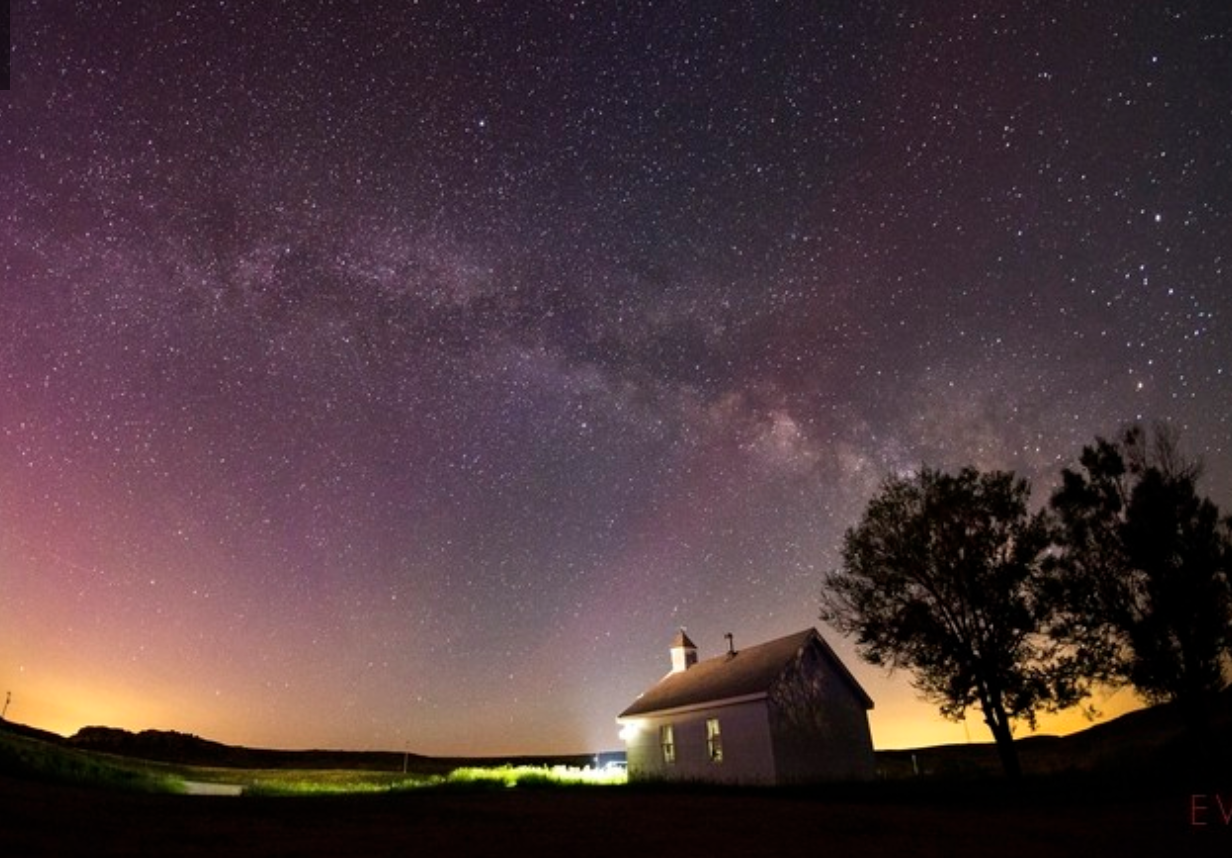
Tonight, my husband and I will sit alone in our darkened little church, taking part in one of the most meaningful rituals I experience each year. After Maundy Thursday services, the entire congregation will watch in silence as the altar is stripped, the eucharist is taken to a small table in the back of the church, and the lights are dimmed. One by one, we will file out of the chapel silently and head home. A couple of us will stay in the church, and others will return throughout the evening to honor this special night by sitting vigil.
For years, my husband and I came back to church at different hours; our children were young and needed someone at home with them during the night hours. Now that they are responsible teens, however, we are fortunate to be able to return to our darkened little church together. At whatever our designated time (9 or midnight or 4 am), we quickly dress at home and quietly climb into the car for the quick drive. Hustling from the parking lot, we open the door as silently as we can. The atmosphere in the sanctuary is simultaneously still and vibrantly alive. We find our seats in front of the small table that has been arranged for use this one night each year; then we settle in to wait. The name for what we will perform is the Vigil of Repose, and it relates to the sacrament of the eucharist, to bread that either becomes or represents a beloved leader’s body, and to dictates about the consecration of that special bread.
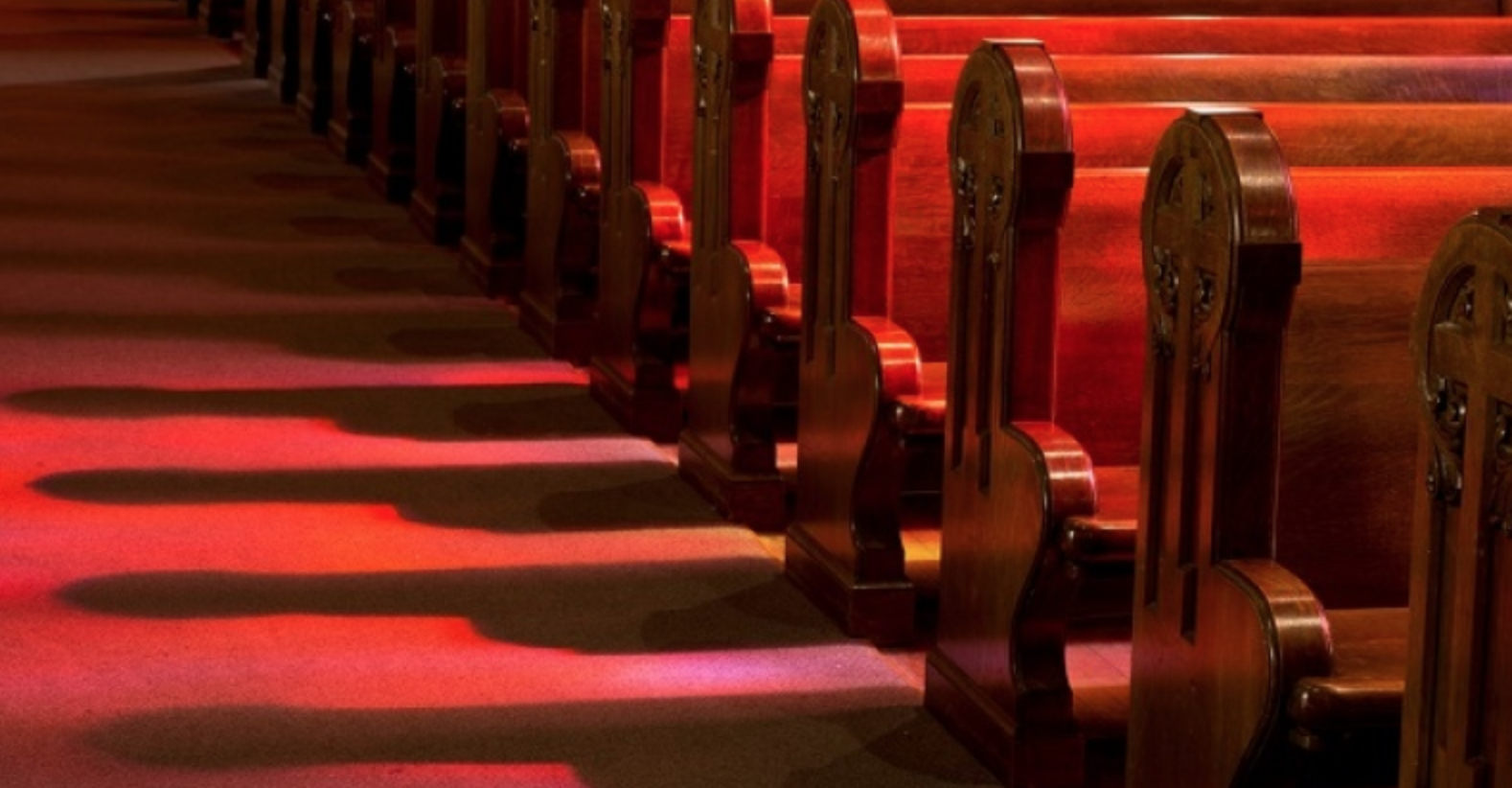
But that is not what this ritual means to me.
For me, this night is all about goodbyes and facing unbelievable fear and supporting those we love. I grew up in a Christian denomination that did not celebrate this vigil. We had our Maundy Thursday worship, often following a seder supper, and then we went home to wait for Good Friday services the following day. I always left church with the heaviest of hearts and faced a night that I knew would contain little sleep for me. I had no idea at the time, but I was sitting vigil every Maundy Thursday night, snuggled in my pink and yellow quilt on the green shag carpet of my suburban bedroom. The entire story pierced my psyche and my heart, and I opened myself to meditate on and imaginatively live into the events that occurred in Jerusalem two millennia ago.
If the specifics of this story bring up resistance, discomfort, disbelief, or judgment for you, no worries. For so many of us, scriptural stories from this (or any) spiritual tradition actually take us far away from spiritual experiences. The stories, though, communicate universal truths that go far beyond their specifics. So, please, if this is not a tradition that feels welcoming to you — try to experience the story beneath the story. I cannot imagine a tale more poignant or revealing: A beloved friend and community leader faces unbelievable anguish — torture, humiliation, and death. He asks some of his closest friends to accompany him into a space of prayer and discernment; he craves their companionship as he attempts to prepare himself for what he knows will shortly occur. All he asks of them is that they wait and watch while he prays: “Then he said to them, ‘My soul is overwhelmed with sorrow to the point of death. Stay here and keep watch with me.’” (Matthew 26:38).

And they just can’t. They cannot fulfill his one simple request.
Three separate times, he returns to find each of them asleep — “Then he returned to his disciples and found them sleeping. ‘Couldn’t you men keep watch with me for one hour?’ he asked Peter.” (Matthew 26: 40)
The story of Jesus in the Garden of Gethsemane always devastated me when I was a child. I could not comprehend that his closest friends would abandon this man during his suffering.
Perhaps this foretells of my work in end of life care, bereavement, and Spiritual Direction. Three different vocations, each one essentially based on me sitting vigil by companioning someone who is travelling through their unique darkest night.
I think that every one of these jobs is rooted in a promise I made to myself when I was very young; I promised myself that no child would ever cry alone as long as I was around to offer comfort. Years of babysitting jobs involved me running to children with scraped knees, toddlers awakened by nightmares, and lonely kiddos missing their parents. And trips to the grocery store often ended in me combing the aisles in search of a crying baby. (Not ever having a plan and certainly not ever possessing the courage or audacity to actually carry one out if I had one). Like most childhood promises, mine was heartfelt, simple, and absolutely impossible to keep.
But my movement to make this promise — the desire to do everything in (and often beyond) my capacity to ensure that no one around me suffered alone? I have kept that movement (and to those of you familiar with the Enneagram system of personality types, this likely communicates my “2”ness — as well, perhaps, as my decades of work unraveling patterns of codependency).
This movement to never abandon someone in need is undoubtedly interwoven with those Maundy Thursday nights spent on my bedroom floor.

For seventeen years, I have been replicating those vigils at the deathbeds of hospice patients through my service on 11th hour teams. When someone in hospice enters the active stage of dying, a nurse or family member will often request that someone sit at the bedside around the clock. Sometimes this vigil is for the one in the bed, the one facing the great mystery. Sometimes it is for the family and friends struggling to release their loved one into that great mystery. Although the particulars of each dying process are unique, the vigils basically involve a member of the team doing what Jesus asked his friends to do that night in Gethsemane — we sit, we witness, we companion.
Sitting vigil all these years has changed my life. Being on my own deathbed three different times and the focus of similar vigils also has changed my life.
And I have come to believe that both sitting and being sat with is the most important work we can do as humans. But this isn’t about our employment as much as it is about our life’s work. We need not quit our jobs to sit vigil for someone. Opportunities to companion someone abound everywhere at all times.
Sitting vigil with the dying is not everyone’s calling. People frequently confess to my colleagues and me, “I could never do what you do.” What a wonderful thing! How incredibly boring our world would be if we were all drawn to serve in the exact same capacity as one another.
So please do not sit vigil at a deathbed if that is not your area. But do sit vigil — beside someone somewhere.
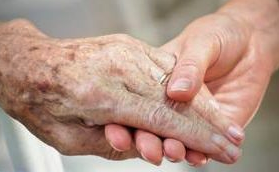
Sit vigil by the child who is being bullied or the one who is struggling to face his bullying nature and change his actions. Sit vigil by the teenager who questions the significance of her life. Sit by your friend whose heart has just been shattered through betrayal or who is facing a life without a recently deceased beloved. Sit by the person whose job, livelihood, and source of identity have just been abruptly terminated. Sit with the hungry, the sick, the friendless; sit with someone experiencing terror or homelessness, racism or abuse of any kind.
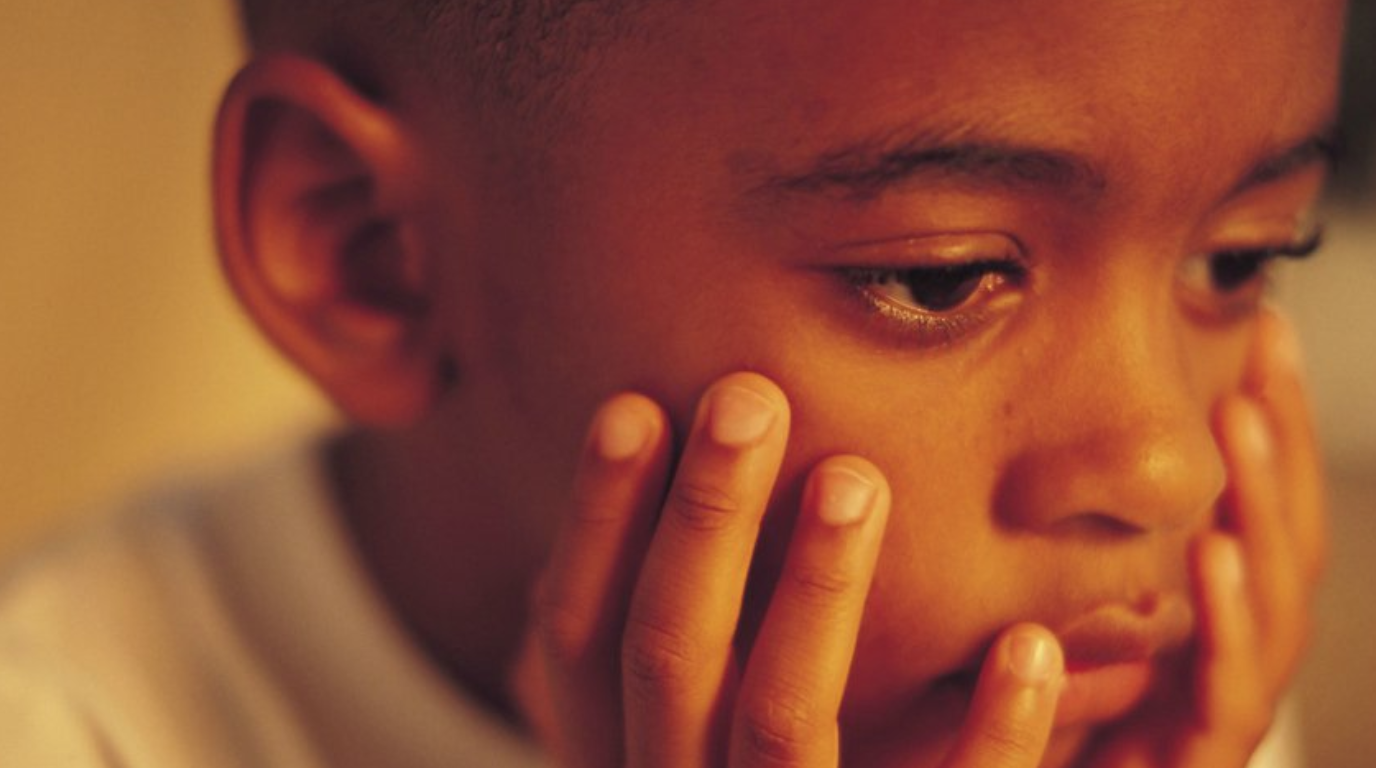
This sitting is not easy. As Jesus said, “‘Watch and pray so that you will not fall into temptation. The spirit is willing, but the flesh is weak.’” (Matthew 26:41). When we commit to sitting vigil in any situation, we will be tempted. Like Jesus’ friends, we likely will be tempted to fall asleep in a multitude of ways. Indeed, the word “vigil” means “awake”. We are called to remain not only physically awake but mentally, emotionally, and spiritually awake as well. We may be tempted to check out by distracting ourselves from the pain we are witnessing. We may be tempted to offer opinions or judgment of the situation rather than to simply companion.
Staying awake requires that we resist these temptations. It also asks us to resist the temptation to live a life so focused on ourselves that we never bear witness to the pain existing everywhere around us.
The name “Maundy Thursday” is derived from one of Jesus’ very last teachings. Earlier in the evening, as he was dining with his friends and followers, he surprised them all by washing their feet. Following this act of loving service, he presented them with a mission, a mandate (“maundy” means mandate) — to love each other as he had loved them. His entire life and ministry involved teaching, modeling, and transmitting unconditional love; and all these years later we still struggle to understand and appreciate that kind of love — and sometimes to give it as well. As he had repeatedly told those gathered that night and all the others who followed him, heaven is right here, right now. It is the experience of loving and being loved unconditionally.
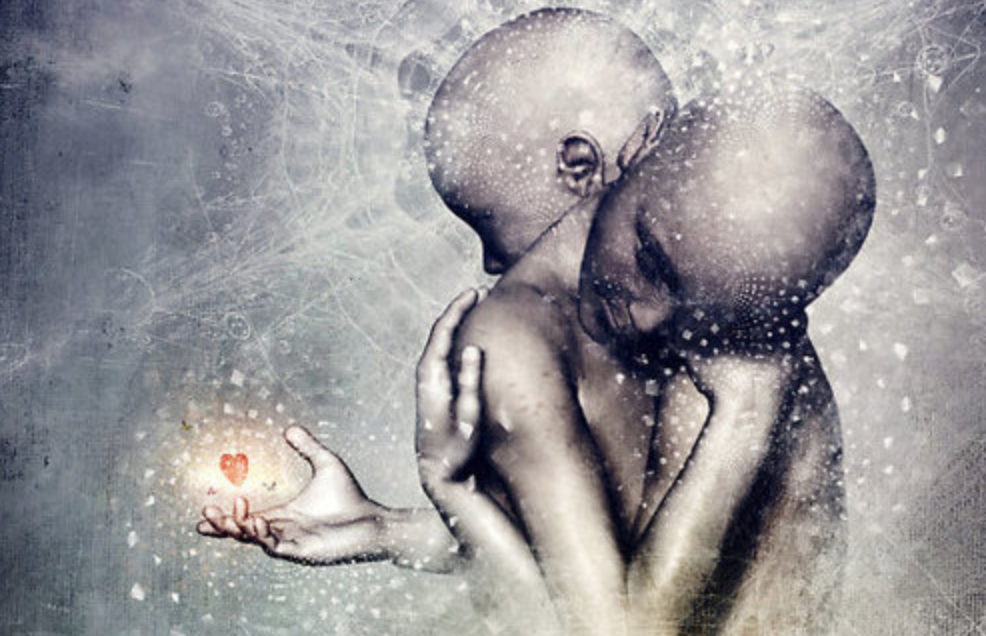
Sitting vigil in all kinds of circumstances can provide us with the experience of that. But it is not easy.
Vigils can be challenging in all sorts of ways. Staying awake often demands that we face each of our demons and fears. And allowing someone else to stay awake with us requires the courage to be vulnerable.
But we do it anyway.
We sit. We stay awake. We witness. We keep company with those beloved souls who walk, pray, or scream their way through their own Gethsemane. And this is how we create heaven right here, right now.

The post Awakening to Heaven: What Maundy Thursday Can Teach Us About Sitting Vigil appeared first on The Way of Conscious Death.
]]>The post Autobiographies and Memoirs: Telling Stories as Life Review appeared first on The Way of Conscious Death.
]]> I’m quite certain that I will never drive an army tank. And I absolutely know I will not be the first American woman taught to maneuver one of those vehicles. Nevertheless, I have been blessed with the gift of riding alongside the woman who did have that honor, my hospice patient Rosella. No, I was not literally beside her in that tank; I have been, however, there with her in my imagination and – more significantly – in my heart.
I’m quite certain that I will never drive an army tank. And I absolutely know I will not be the first American woman taught to maneuver one of those vehicles. Nevertheless, I have been blessed with the gift of riding alongside the woman who did have that honor, my hospice patient Rosella. No, I was not literally beside her in that tank; I have been, however, there with her in my imagination and – more significantly – in my heart.
When I heard the rudimentary facts about Rosella learning to drive an army tank several times before I met her, I learned a bit about this feisty, fearless young woman from Minnesota who stood amongst all those men training to go to war. Because of this and other tales told about my patient, in fact, I discovered a great deal of facts and details about this small, frail, elderly woman before our first visit.
But listening to these events recounted by her friends and hospice employees was entirely different from listening to Rosella recount those days of climbing into the tank and being instructed in its use. When others narrated, I pictured the scene as though it were happening in front of me, almost like a movie. But when Rosella shared the tale, I often imagined what it may have been like to be in her boots on those Kansas plains so many decades ago. The immediacy with which she spoke, the emotions that shone through her words, and her ability to return to those memories invited me into them as well. Rather than a witness in the “movie” I created by listening to her speak, I became a participant.
Yet an even richer treasure for me happened through this narrative one sunny afternoon in Rosella’s room. She was uncomfortable and agitated and sometimes quite frightened as her body very slowly stopped working. This afternoon in particular, she expressed all those emotions repeatedly until one moment she looked into my eyes and asked, “Can you believe I drove a tank?” “Tell me how you feel about that, Rosella,” I prompted. And out poured so much more than the facts.
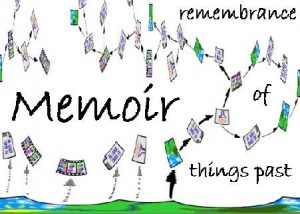
I was being invited into something absolutely precious. That simple question with which she began – “Can you believe . . . ?” – became a entrance point for me to join her not just in the narrative, but in her wrestling with some of the biggest questions of her life: Was I ever really that courageous and spirited? How did this body, once robust and filled with energy, become so withered and weak? Am I still the same person I was all those years ago?
Through the course of our exchange, Rosella shared with me the musings that filled her more coherent moments, the uncertainties that were piling up as she struggled with her advanced age and the question of why (as she frequently asked) she was “still here”, and the grief that often filled her heart when she remembered lost loved ones and both joyful and sorrowful periods of her life.
By asking the question, “Can you believe I drove a tank?” – not really of me but of herself – Rosella had entered the world of memoir. And by allowing me to witness her struggle with this question, she had summoned me into that world as well.
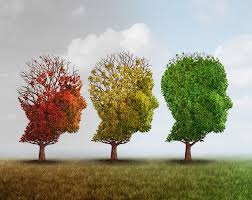
The first time I was dying, I began writing similar memoirs to Rosella’s. As my body was shutting down during those long days and nights, something else was happening also: I was traveling constantly. Hooked up to machinery mounted on my hospital room wall, I was forced to remain in bed almost around the clock. And although my body was quite motionless much of the time, other parts of me were far from stationary. In fact, during those weeks, I may have journeyed more than I ever had during my decades of trekking all around the globe. Mostly I traveled back in time, to earlier years, where I continued conversations that had been left unfinished; I said and listened to things that seemed to change the trajectory of events I thought had ended decades before. Often, during these experiences, I was able to in some way be the companion with whom I was spending time in addition to myself. It always felt like I was trying to learn something from these memories; and often it seemed as though I was in someway attempting to re-create them, to have a “do over”.

“Life Review” is a term that became codified by Raymond Moody and other Near Death Experience researchers – persons who study the phenomenon in which persons very near death (often clinically dead) experience a host of happenings, including floating above their bodies, seeing a tunnel of light, and feeling immense peace and comfort (please note: there are many other things experienced in NDE, however much of the research often disregards reports that do not fit a singular system of codification). One of the most frequently recounted components of NDE is an event in which the dying or dead persons are shown a quick history of their lives; this is called a “Life Review”.

Regardless of the veracity of NDEs, which has been debated centuries before the term Near Death Experience was coined, those of us whose deaths are protracted know that Life Reviews happen. We know, because we almost always find ourselves conducting them, sometimes for weeks or months or even years.
More than simply remembering previous periods and long-gone incidents from the timeline of our lives, these ponderings induce deep self-reflection. They allow us – sometimes even force us — to grapple with regrets, with agonies inflicted by and on us, and with the angst of trying to make meaning out of our one small life. They also guide us into new and profound places of understanding and acceptance; through them we can comprehend events in fresh ways. They offer us access to the most elemental matters of human life. Such memoir-creation compels us to view our lives through the lenses of love, justice, and mercy.
Rosella’s question – “Can you believe. . .?” – allowed me to join her in her grappling, her longing to understand, her attempt to locate lenses through which she could accept the circumstances in which her life was very slowly coming to a close. Had I answered her, “Tell me about that time again,” I likely would have triggered another recounting of a significant event in her life. And I would have missed a grander opportunity.

Rosella was filmed telling that story along with so many others; and a video was made, so that we can hear her stories told in her voice even now, after she is gone.
Many hospices offer patients and their families the opportunities to create such videos. These films become treasures for those of us left behind. I love being part of their creation, and I particularly love watching them with family members months and even years after someone has died. To me, these feel like the best examples of autobiographies. These Life Reviews are narrations of events shared through the body and voice of the person who experienced each of them.
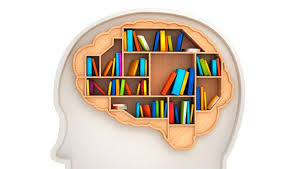
The kind of Life Review I witnessed Rosella construct that sunny afternoon, however, was more akin to the best memoirs available on bookshelves. Whenever I have been blessed to be part of a Life Review, I feel like I know that person, not just like I know about that person. These narratives create for me portals through which I enter not only the world of another’s story but the domain of her heart.

The post Autobiographies and Memoirs: Telling Stories as Life Review appeared first on The Way of Conscious Death.
]]>The post Remember: Ashes, Dust, Humility, Surrender appeared first on The Way of Conscious Death.
]]> “Remember you are dust and to dust you will return.” The priest repeated this phrase again and again, fashioning crosses out of ashes on each of our foreheads. As I waited for my turn to participate in this ancient rite, I became overwhelmed with emotion. While the memory that I will die is never far from my mind, this particular liturgy highlights this realization in expansive ways by allowing me to connect with others through the communal embrace of mortality. And this year, wearing a heart monitor to gauge just how compromised my heart had become, I was perhaps even more acutely aware of my death than in some other years. After receiving my ashes, I returned to my pew to kneel with my family, feeling each of those persons closest to me exploring deeply the truth of the words being repeated. And then we all turned our heads to watch the priest walk to the outside of the pew in front of us. Sitting there, connected to an oxygen tank, was one of our community’s elders. Her labored breathing had formed a background hum to the ceremony. Deprived of oxygen, the color of her skin had become gray. She looked like ashes already. She was a visceral reminder for us that death is always present. At the close of that Lenten season, she no longer would be in need of oxygen; I, on the other hand, would be entering into congestive heart failure and would soon be receiving oxygen myself. And the following Lent, I would be recovering from my second heart surgery, and she would enter hospice care.
“Remember you are dust and to dust you will return.” The priest repeated this phrase again and again, fashioning crosses out of ashes on each of our foreheads. As I waited for my turn to participate in this ancient rite, I became overwhelmed with emotion. While the memory that I will die is never far from my mind, this particular liturgy highlights this realization in expansive ways by allowing me to connect with others through the communal embrace of mortality. And this year, wearing a heart monitor to gauge just how compromised my heart had become, I was perhaps even more acutely aware of my death than in some other years. After receiving my ashes, I returned to my pew to kneel with my family, feeling each of those persons closest to me exploring deeply the truth of the words being repeated. And then we all turned our heads to watch the priest walk to the outside of the pew in front of us. Sitting there, connected to an oxygen tank, was one of our community’s elders. Her labored breathing had formed a background hum to the ceremony. Deprived of oxygen, the color of her skin had become gray. She looked like ashes already. She was a visceral reminder for us that death is always present. At the close of that Lenten season, she no longer would be in need of oxygen; I, on the other hand, would be entering into congestive heart failure and would soon be receiving oxygen myself. And the following Lent, I would be recovering from my second heart surgery, and she would enter hospice care.
 The words repeated during the imposition of ashes originate not in the gospels but in the Hebrew Scriptures. God speaks them to Adam in Genesis 3:19: “you are dust and to dust you will return”. We, like Adam, like all humans, will return to the Earth. Adama means Earth in Hebrew. God breathes life into the Earth to create Adam, symbolically defining our connection with the Earth. We start our lives close to the ground; many of us end our lives again in those same positions.
The words repeated during the imposition of ashes originate not in the gospels but in the Hebrew Scriptures. God speaks them to Adam in Genesis 3:19: “you are dust and to dust you will return”. We, like Adam, like all humans, will return to the Earth. Adama means Earth in Hebrew. God breathes life into the Earth to create Adam, symbolically defining our connection with the Earth. We start our lives close to the ground; many of us end our lives again in those same positions.
This connection to the Earth is one many of us spend lifetimes trying to forget or overcome. Indeed, all of this attention to falling, to descending, may seem out of place in our contemporary world. Falling connects us with everything that is downward in a world that glorifies upward movement. To travel upward metaphorically (whether that is to “climb the corporate ladder” or to “reach the heights of a career” or to transcend any earthly situation) is better than to move downward. We speak of people having a fall; declining in health, wealth, and status; and descending into the depths of misery. We “lower” ourselves when our situation worsens, but we ascend when it improves. And much of what we receive in terms of spiritual guidance and motivation likewise employs the language of transcendence. Like our medieval ancestors, we turn our eyes toward some Heaven where we will arrive either when we have died (in more conservative circles) or when we have learned to “manifest a better reality” (in some Newer Age beliefs). We attempt to transcend the Earth and our humanity, seeking to move beyond the very substance from which we were created and to which we will return.
Ash Wednesday provides an opportunity to remember.
The root of the word “humiliation” is humus, meaning Earth; so to humble ourselves is to fall back into the Earth. Jesus knew this, as did St. Francis. Richard Rohr notes that the two adjectives Francis most often associated with God were: good and humble. Rather than humility being negative, as it often is viewed in our culture, Francis “understood the humility (kenosis) and the patience of incarnation”.
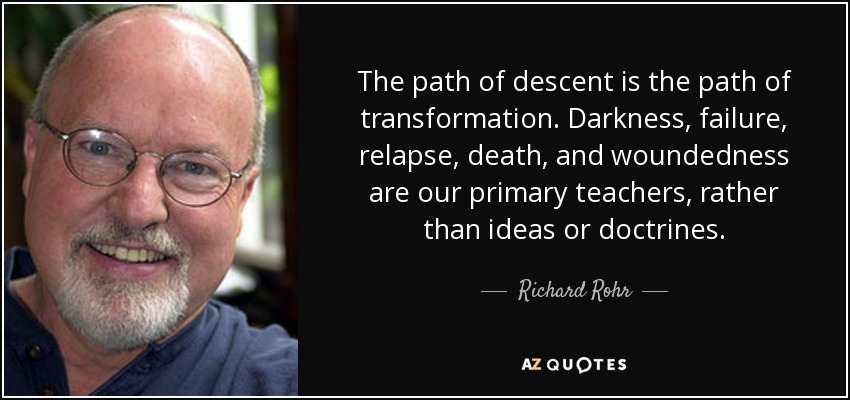
Throughout the ages and across the globe, worshippers have fallen to the ground in reverence; countless prostrations have been made to indicate one’s subservience to the Divine. Meister Eckhart also stressed the path of descent:
“God is not found in the soul by adding anything, but by a process of subtraction . . . I advise you to let your own ‘being you’, sink into and flow away into God’s ‘being God.’ Then your ‘you’ and God’s ‘his’ will become so completely one ‘my’ that you will eternally know with him his changeless existence and his nameless nothingness”.
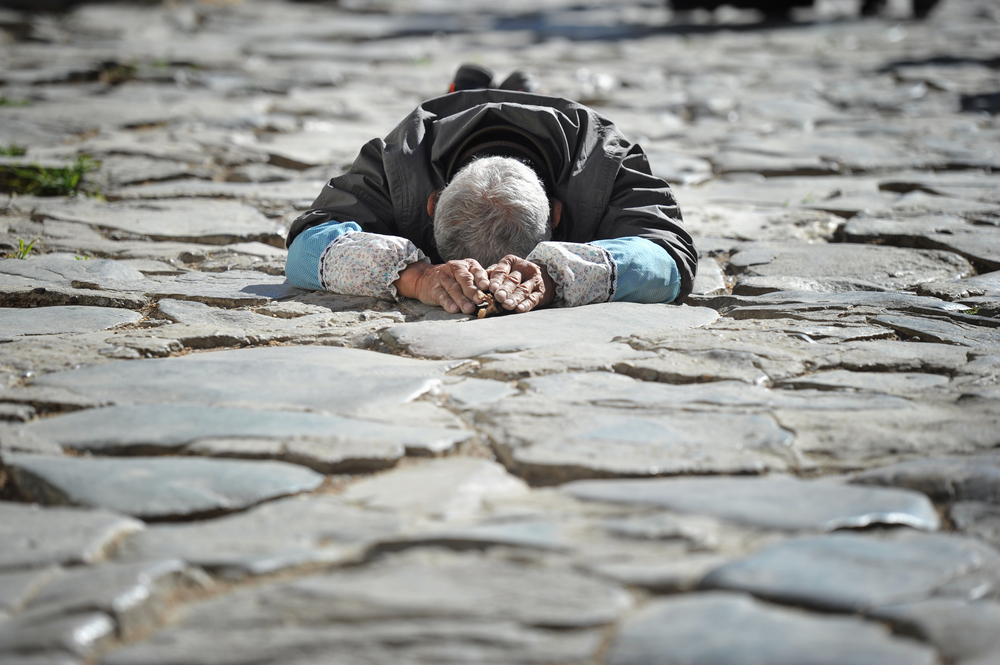
Our falls, both literal and figurative, during the dying process allow us the opportunity to be humbled. It is humbling each time I allow myself to experience fully a new level of wellness in my body. During my most recent hospitalization, the baby boy whose brand-new body taught me so much about life and death again was with me at the hospital, towering above me. This time, his baby sister, who would soon also tower above me, was there as well. On Mother’s Day, they arrived with news of his swim meet and her gymnastics meet; I marveled at the strength and agility of their young bodies as I watched my own strength and agility waning quickly. We decided to walk to the family room at the end of my Cardiac Intensive Care Unit to look at the beautiful view of the mountains and to play board games. Although we were only walking 50 feet down the hallway, I found myself needing to take a break at least three different times. Leaning on my IV poles while my family members adjusted my oxygen tank, I wondered if I would ever walk without these devices again.
It is always humbling to find myself so ill, but such humility is not only available to those of us with weakened physical bodies. We each encounter a multitude of opportunities to remember that we will someday return to the earth; we can use each of these to practice the art and gift of surrender.
I pray that I continue to allow myself to be humbled; may this movement downward – this path of surrender – last much beyond the ashes that are placed on my forehead. And may I offer myself to be humbled, to be emptied through the practice of surrender, so that the dualisms of Heaven and Earth, up and down, good and bad disappear.
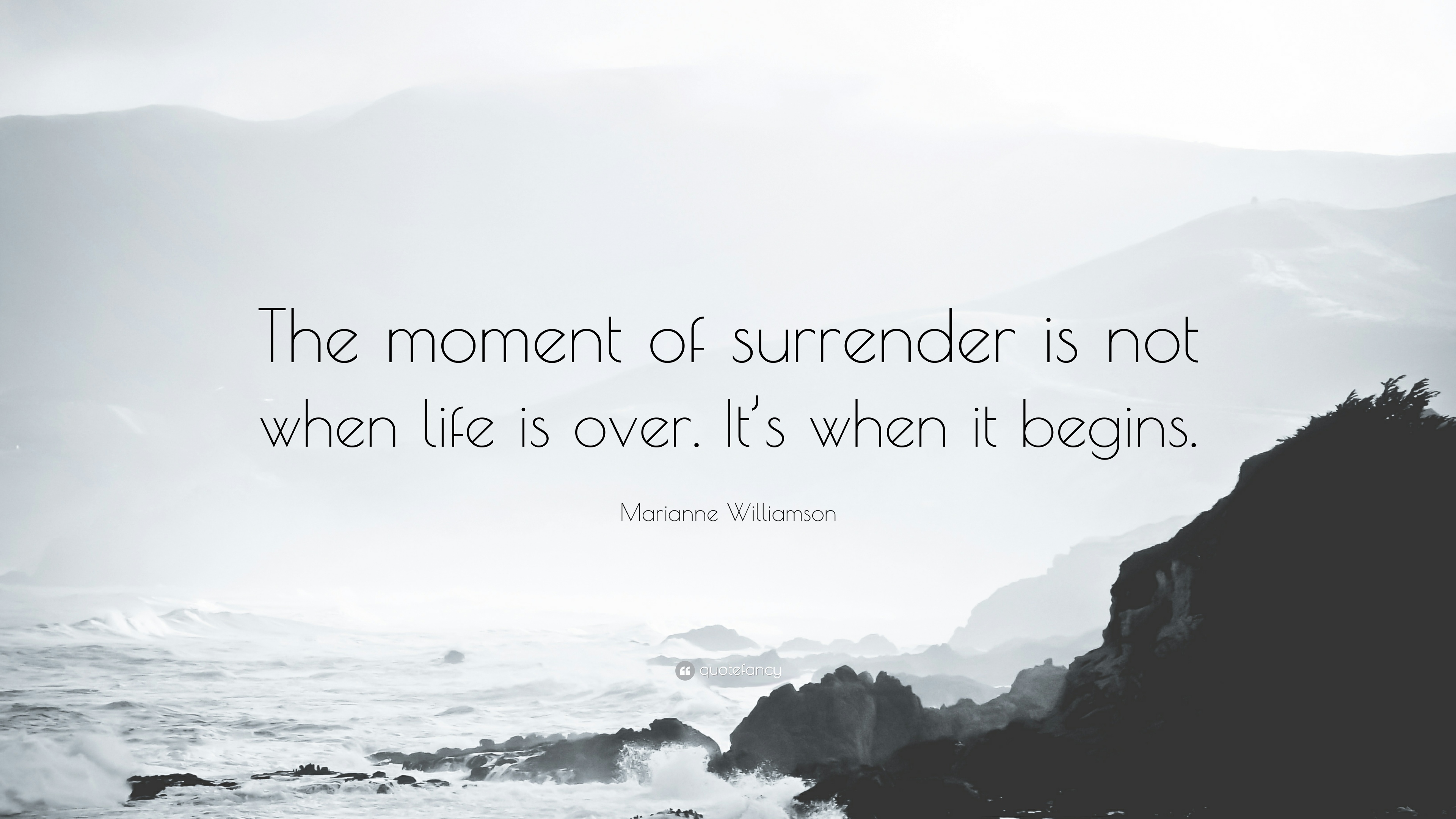
The post Remember: Ashes, Dust, Humility, Surrender appeared first on The Way of Conscious Death.
]]>The post Storytelling as Grief Care appeared first on The Way of Conscious Death.
]]> “I’m sorry. Someday I’ll be able to talk about her without breaking up,” the man assured my husband and me. Sitting across from him at a party, we were blessed to hear stories about his beloved wife who had died two years before. Tales of dances and car rides during their courtship, narratives of their years raising children together, and accounts of her cancer journey and final days – one by one he took these precious gems from the treasure chest of his memory and presented them to us. Woven throughout these stories were apologies and promises: “I’m sorry for bringing her up again,” “I won’t always cry when I think of her.”
“I’m sorry. Someday I’ll be able to talk about her without breaking up,” the man assured my husband and me. Sitting across from him at a party, we were blessed to hear stories about his beloved wife who had died two years before. Tales of dances and car rides during their courtship, narratives of their years raising children together, and accounts of her cancer journey and final days – one by one he took these precious gems from the treasure chest of his memory and presented them to us. Woven throughout these stories were apologies and promises: “I’m sorry for bringing her up again,” “I won’t always cry when I think of her.”
Each time he interrupted his tales with one of these types of statements, my husband and I rushed to assure him that he did not need to apologize or explain. We welcomed his stories.
Sharing these stories with us was something he seemed to need to do; yet he felt bad about doing it. He judged himself and assumed that we would not be interested in listening. The truth is that both my husband and I felt honored to spend time with this gentleman and his tales. Through them, we felt like we were introduced to a lovely woman whom we will never meet, we were reminded of some valuable life lessons, and we felt enfolded in a love that surpasses death.
Each of those gifts, however, was a bonus of sorts for us, for we were not attending to these stories for our sake at all. We listened as our way to offer grief support.
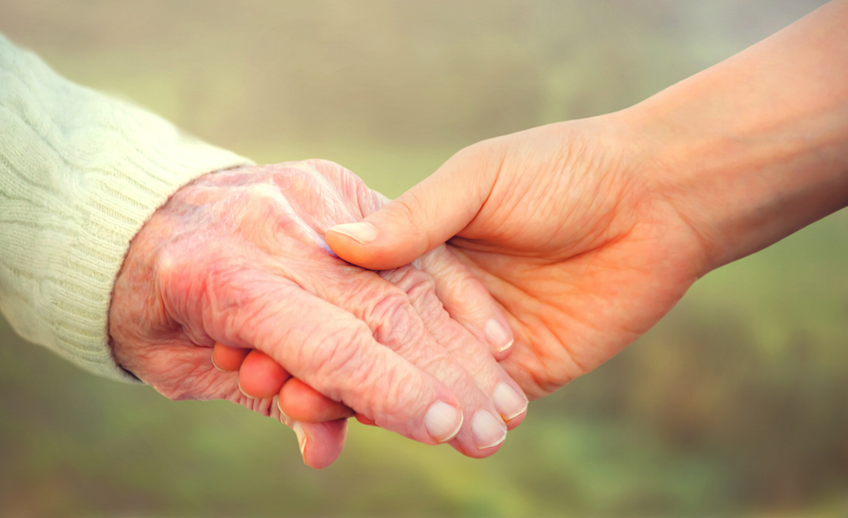
In contemporary Western culture, it often seems that we have deemed the sole purpose of storytelling to be entertainment. If something shared with us does not grab our interest, we disengage. We get frustrated to hear stories repeated again and again. We have confused our role as listener with that of audience member.
To be sure, sometimes we do amuse one another with our stories; however, those of us who are bereaved have entirely different needs that can only be fulfilled when others hear to our narratives.
I listen to stories as grief support continually – and not just when I led bereavement support groups. If we pay close attention, we notice that such narratives are being shared everywhere in the midst of mourning:
A young mother who longs to talk about her toddler’s death but whose family members tell her she needs to “move on”.
The man whose parent, in the final stages of Alzheimer’s, no longer recognizes him.
A minister whose spiritual community fell apart, leaving her without a family of choice and without anyone to listen as she navigates this rocky terrain of grief.
The bereaved and their stories are everywhere.

Indeed, the other day, my daughter and I rushed into the grocery store to pick up “just one item”. Grabbing a loaf of bread in the bakery, we noticed an elderly woman with a motorized shopping cart; she was struggling to lift something off a shelf. When we offered to help, she replied, “Yes, please,” then paused and continued, “My husband always used to come shopping with me.” Glancing at my daughter, I sent her the non-verbal cues she has come to recognize as “Settle in; we are going to be here awhile.” And I asked the woman to tell me about her husband. She shared stories of their life together — of burnt toast and his long-dead mother, of his heritage and their home — not for my sake. I never even learned her name and likely will not see her again. She told these stories because she is grieving. And telling stories is often what grieving people do.
Bereavement care specialist Alan Wolfelt tells us, “We must say hello before we can say goodbye.” (see https://www.centerforloss.com/ for more information on Wolfelt’s Organization, Center for Loss and Life Transition, and his extensive bibliography). Our culture, he explains, rushes us through the grieving process; we push ourselves and others to end relationships when a death occurs. What we really need at that point, though, is to continue the relationship; we need to reassure ourselves that it actually happened, to explore it, and to honor it.

People across the planet throughout time have known this. They have told stories of their dead loved ones for the remainder of their days. In contrast, in the past few decades many Westerners have been met with judgment and disregard when they have attempted to do the same. Even some therapists often urge clients to complete their narratives as a way to “move on” with their lives.
Fortunately, others, like Wolfelt, emphasize the indispensable role of storytelling in grief care.
Two books published last year significantly expand this conversation. Both Patrick O’Malley and Megan Devine were therapists who had treated many bereaved clients. When O’Malley’s infant son died and when Megan’s husband drowned, however, each realized how inadequate that care may have been. Plunged into the blackness of grief, each of these individuals felt entirely unsupported through their field of expertise; therapy failed them both.
 Devine’s It’s Ok That You’re Not Ok: Meeting Grief and Loss in a Culture that Doesn’t Understand and O’Malley’s Getting Grief Right: Finding Your Story of Love in the Sorrow of Loss each use the authors unique grief experiences as narratives through which they critique contemporary constructions of grief. By demonstrating our culture’s tendency to pathologize grief and the resultant injury this can cause, both volumes explore ways we can better support ourselves and one another as we experience the human condition of grief.
Devine’s It’s Ok That You’re Not Ok: Meeting Grief and Loss in a Culture that Doesn’t Understand and O’Malley’s Getting Grief Right: Finding Your Story of Love in the Sorrow of Loss each use the authors unique grief experiences as narratives through which they critique contemporary constructions of grief. By demonstrating our culture’s tendency to pathologize grief and the resultant injury this can cause, both volumes explore ways we can better support ourselves and one another as we experience the human condition of grief.
And they each determine that storytelling is an essential component to this support.
O’Malley notes, “It soon dawned on me that, through their stories, my clients were being liberated from external rules or expectations and thus could grieve in a much more natural way”. Sharing narratives can help us change the way grief itself is experienced as well as the ways it is understood and interpreted.
There are as many reasons for and ways to use stories in grief care as there are individuals who grieve. Some of those that occur often are:
To Make The Loss Real: The man caring for a parent with Alzheimer’s Disease often wonders if he is “making too much of the situation”; his mother, after all, is still alive. When his stories of her failing memory are met with statements like “At least you had many decades with her,” or “It’s fortunate she did not die quickly,” he questions his felt experience of deep loss. Devine advises, “Telling the truth about grief is the only way forward: your loss is exactly as bad as you think it is.”
To Have Our Pain Witnessed: Studies in Neuropsychology prove that from our earliest days we need our experiences to be witnessed with loving presence in order for us to integrate them into our lives in healthy ways. The minister who suffered the loss of an entire spiritual community spent years searching for someone to listen to her story, to have her pain reflected back to her. As Devine notes, “To feel truly comforted by someone, you need to feel heard in your pain. You need the reality of your loss reflected back to you – not diminished, not diluted.”
To Re-Write the Past: Devine share, “Humans are storytelling creatures: it’s why we have cultural mythologies, creation stories, and movies. Telling the story of this loss over and over – it’s like we’re looking for an alternate ending. A loophole. Some way the outcome might have changed. Could still change. Maybe we missed something. If we can only get the story right, none of this would be happening.” The young mother has replayed that day countless times in her mind, hoping for a different outcome – one in which she doesn’t find her son lying on his bed, lifeless.
To Continue the Relationship: The woman in the grocery store was in some way keeping her husband alive by introducing my daughter and me to him through her stories. As O’Malley writes, grief isn’t “getting over loss”; it is “learning to live with it and to use the grief narrative as a way to preserve a bond with the one who died.”
This storytelling can come in forms other than spoken narratives, of course. Some of us will paint images, some will dance our tales, some will sing them to the heavens.
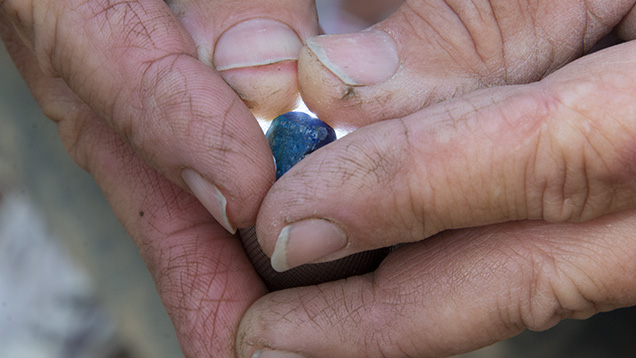
Like the gentleman at the party, we each have treasure chests full of story gems. When we are grieving, most of us need to take those jewels out frequently, to hold them to the light, to turn them around and examine their facets. If you are one who is holding such a gem right now, please find someone whom you trust and share it with them. If you are one who is blessed to be shown such a gem, please witness it and honor it. By doing so, you are not only supporting a bereaved individual; you are also helping to change the course of grief care in our world.
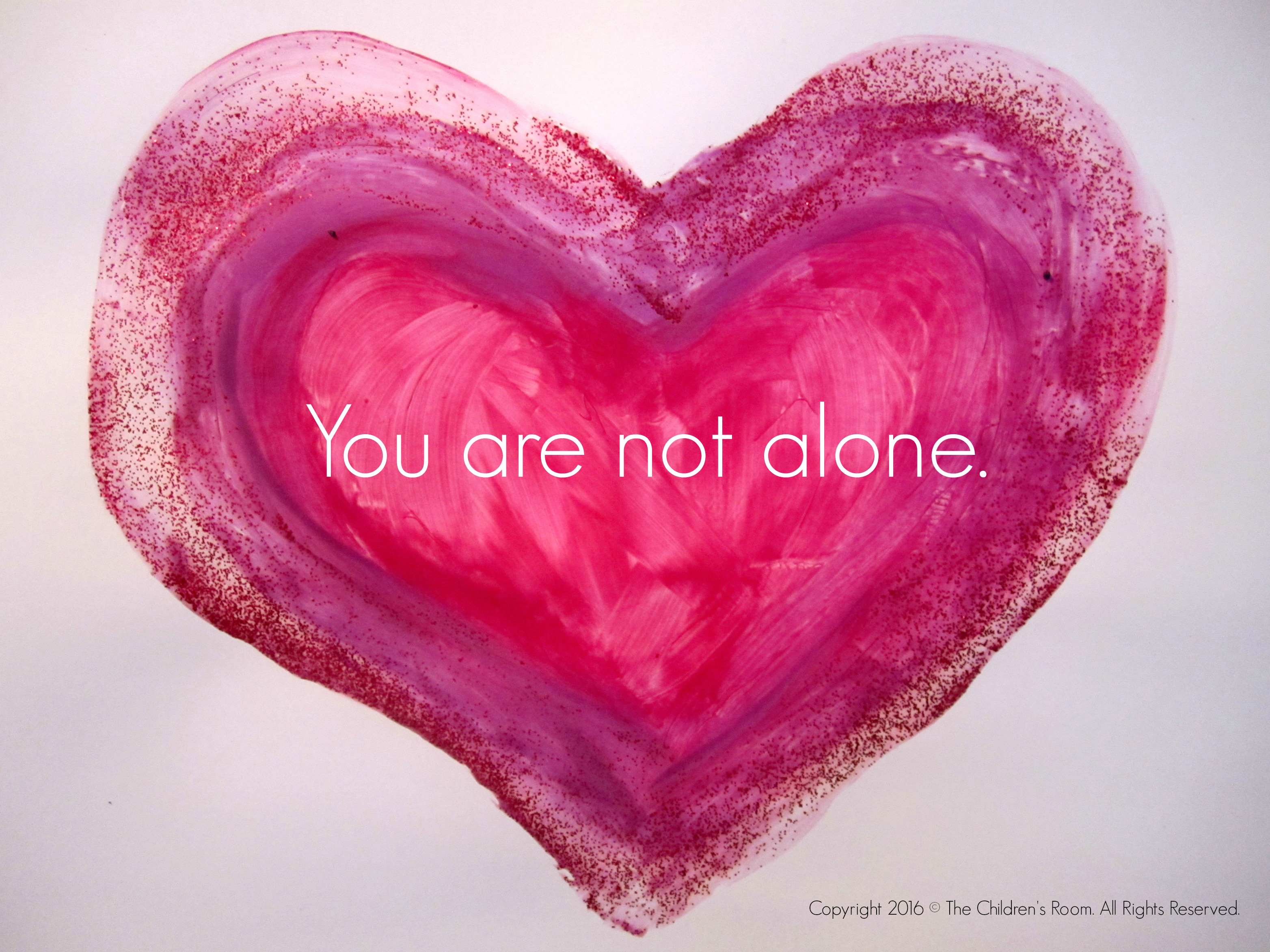
The post Storytelling as Grief Care appeared first on The Way of Conscious Death.
]]>The post Losing Stories: Ways Dementia Affects Our Narratives appeared first on The Way of Conscious Death.
]]>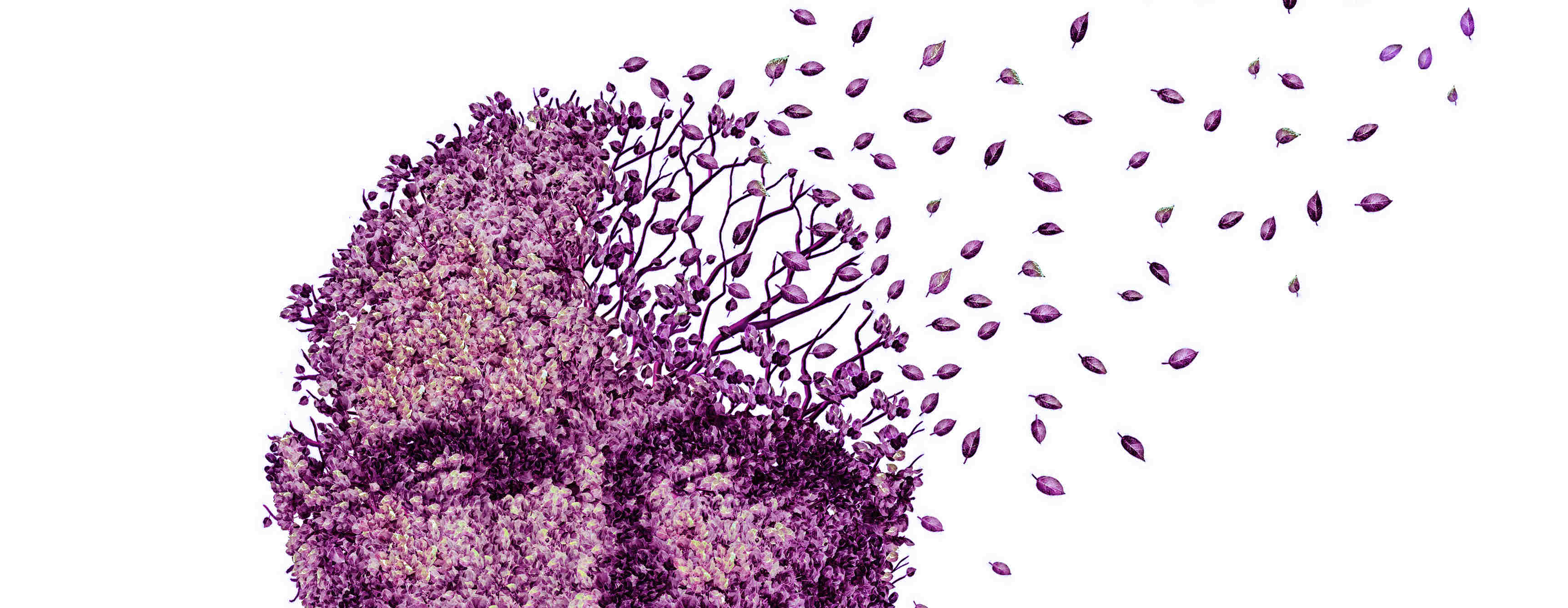
My grandfather sat down with me over winter break my first year in graduate school. “Amy Love,” he said, “I want to tell you our weekly schedule. On Monday we wind the clocks, Tuesdays the gal comes to clean the house, on Wednesdays we go get Grandma’s hair done and have Chick-Fil-A for lunch . . .” I had no idea why he was sharing this information with me; nevertheless I listened carefully and stored it away somewhere in my mind. Within four months, he would be dead, and my grandmother would be left in the care of my mom and her brother. My grandfather had entrusted me with a piece of their story, so that I could keep things consistent for Grandma. Because what he sensed but perhaps had not fully admitted to himself – what none of the rest of our family members had any idea was occurring – was that my grandmother was rapidly losing the details of daily living.
Her journey with Alzheimer’s followed the path that many dementia patients experience. What her husband witnessed was her loss of short-term memory and her ability to readily locate herself within a specific time and place. By telling me about their weekly schedule, my grandfather was trying to ensure that her memory loss was mitigated and that her routines were kept secure for her. In the eight years that followed his death, my grandmother lost not only capacity to maintain her daily appointments; her brain lost the ability to recall family member’s faces, her own name, how to swallow, and eventually how to fight the infection that would cause her death.
And, all along the way, she lost stories.
When I was a young girl, I used to delight in my grandmother’s tales. Sitting at the kitchen table as my grandfather did the dinner dishes, I would prompt her, “Tell me about the time Mom . . .” or “What was it like in England when you were growing up?” During the early years of her dementia, those stories continued to be shared, even as she consistently forgot whether she had eaten breakfast or what was on the agenda for the next day. Indeed, it often felt as though she were living in the times and places of the narratives of her earlier life.

New stories appeared too in her early stages of Alzheimer’s – stories I never had heard before, stories that my exceedingly polite grandmother never would have shared if the strong filters of decorum had not been obliterated by the plaque building in her neuronal pathways.
What happens to our stories when dementia makes them inaccessible to us?
One of the most challenging aspects of caring for dementia patients is the loss of their narratives. Family members feel hurt as the person they love no longer remembers significant events they shared and eventually looks at them without any recognition at all.
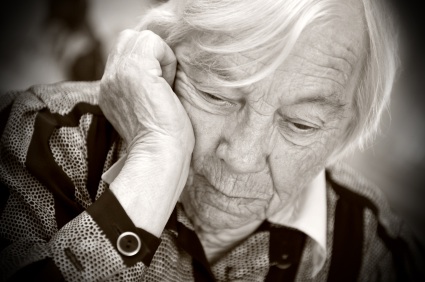
It can be frightening to acknowledge that someone we love lives in a different reality than ours. During the first few years of my grandmother’s disease, much of the conventional wisdom guided caregivers to keep focusing patients on “reality”, to continue to inform them of the circumstances in which they actually existed and negate those they said they were experiencing.
That felt cruel to me, so I never adopted those practices. This woman was amongst the first people to hold me and tell me stories; she listened to my little girl tales, she wrote her autobiography as a pre-teen, and she was the keeper of so many family narratives. Her stories were very present and real to her, and she had no need to be forced into someone else’s reality.
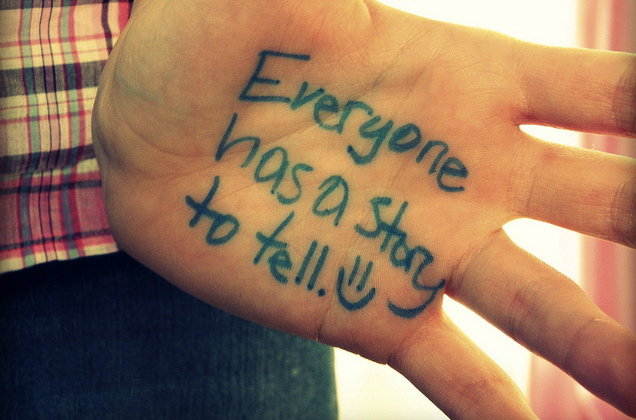
And she still had so many stories to share. These precious gems would have disappeared if I continually reminded her that she was an elderly woman this hot Alabama afternoon in 1993 and not a girl buying fish and chips wrapped in newspaper from the corner shop on a rainy day. These stories could only be accessed if I entered into her reality rather than futilely attempted to force her into mine.
Thankfully, knowledge about dementia and guidance regarding its care have both changed greatly in the intervening years. We now recognize the importance of meeting patients where they are, particularly when that “where” may be hundreds of miles away and decades ago.
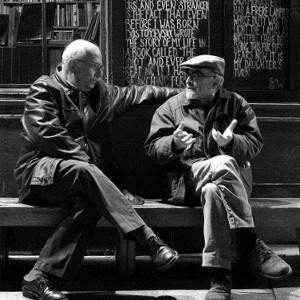 Some of the most fundamental reasons humans construct narratives are to:
Some of the most fundamental reasons humans construct narratives are to:
- Create order from chaos
- Understand events and people
- Ensure that we may someday be remembered
- Connect with one another
- Be witnessed in our joy and pain, our triumphs and challenges
But in a dementia patient, those needs are no longer readily fulfilled, nor are some of them really felt. Grandma quickly lost her mental capacity to create order out of chaos and to understand events and people. She eventually could not grasp her own identity and a need to have it remembered or not. But those other two desires driving human story-telling – to connect with others and to be witnessed – never seemed to disappear, even as her capacity to have them met slipped away from her. It seems to me that when we enter into the stories of those who may have “lost their stories”, we are engaging in the single most significant aspect of sharing narratives – that of allowing these tales to connect us with one another. The content of the story is not what is significant; the sharing is.
Mallory Everhart, a friend and colleague of The Way of Conscious Death, learned to use her experiences in Improvisational Comedy to help her to meet her nursing home and hospice patients where they are, to enter into their world as a way of connecting with them and witnessing them. As with comedy and playing with young children and even watching a movie, when we allow ourselves to enter the portals presented through connecting with dementia patients, we are given access to new worlds. This is a profound gift. The depth of connection presented to us far surpasses time and location and even words. To tap into this possibility, listen to Mallory’s inspired poem “Language Lessons”:
https://www.youtube.com/watch?v=LcY4MrTcSr0
Can you change your language in order to connect with a loved one who no longer recognizes you?
Can you give and receive the “I love you” present beyond the particular “I” and “you” that no longer mean anything to that beloved?
During the middle years of Grandma’s illness, long after she had lost her schedule-keeping powers but before she lost spoken language altogether, I noticed a pattern to her story-telling. The age of whomever she was speaking with always seemed to guide her narratives. When I was there, she talked to me as though she were a very young woman; we chatted about dating and wondered what our futures would bring. With my mother, however, she also became a mother of young adults and discussed her children as though it were decades before. I marveled at this pattern for years and eventually recognized that she was, likely without any consciousness, entering into my world each time I was with her. Without any training or intent, she was weaving together her reality with mine.

Through each of those interactions, she taught me how to do that very same thing, how to allow whomever I am with to guide me through the portal and into their world. Since then, I have worked with so many patients whose memory fades but whose stories do not.
One hospice patient, Rosella, who had vascular dementia, never was able to track the names of her various caregivers. But she never lost her capacity to connect with the essence of each of us. Each week, when I entered her room and announced, “Hi Rosella. It’s Amy. I’m here to visit with you,” she would look up at me and ask, “Who are you?”
“I’m Amy.” Slowly she would nod her head, as if in recognition.
Then she would say, “Oh, I love you.”
Eventually, she did not even wait for my reply before offering her answer; so that the statement followed right upon the question – “Who are you? I love you.”
Her love was not dependent on her remembrance of my identity; it was not dependent on my identity at all. The story of her love transcended both of our realities.
That story continues long after she died. And it will continue long after I die.
As with all true stories, its offerings are both timeless and endless.

The post Losing Stories: Ways Dementia Affects Our Narratives appeared first on The Way of Conscious Death.
]]>The post Telling Stories in the Dark: Collective Narratives appeared first on The Way of Conscious Death.
]]>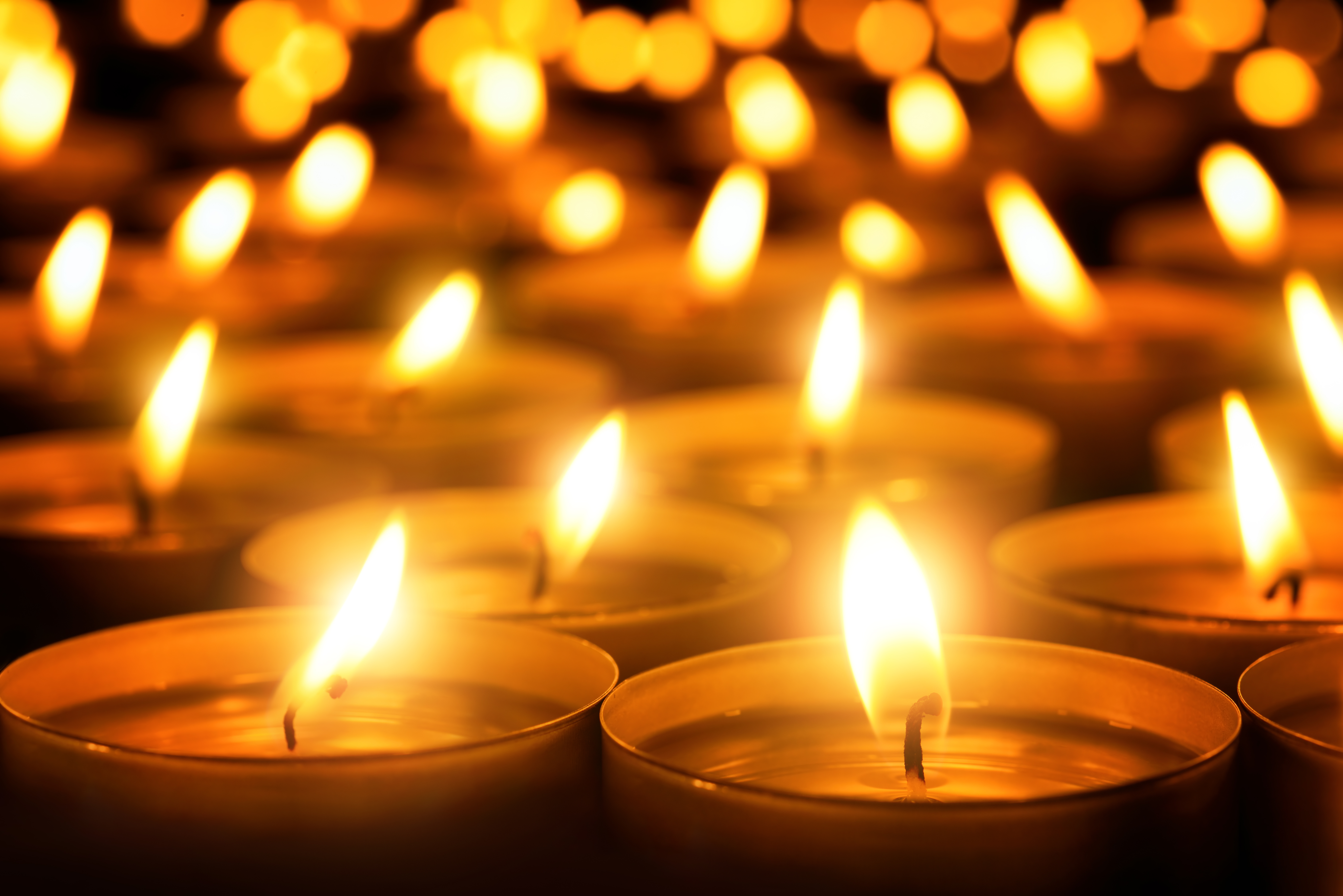
We sat huddled around candles in the darkened cellar, heads bent toward the center of the circle. Together, we were taking part in a ritual that is amongst the oldest enacted by humans throughout our planet – that of sharing stories during winter’s long, dark nights.
This particular basement belongs to a small, beautiful Episcopal church and thus has been the storehouse for a multitude of Jewish and Christian narratives retold across much of the globe for two millennia. Each Sunday, congregants gather together to retell those stories, to ponder their significance, and to apply them to contemporary Western life. And a few days after this particular evening many members of this particular group would be repeating some of the most cherished narratives of the Christian tradition.
But tonight we were sharing other stories – some of them tales of events that actually occurred, others that may not have but are nonetheless true.
This night was a very special one, for it marked both the end of Hanukkah and the eve of Winter Solstice. Both of these holidays celebrate the miracle of light, and we had gathered together to remember and renew tales of illumination.
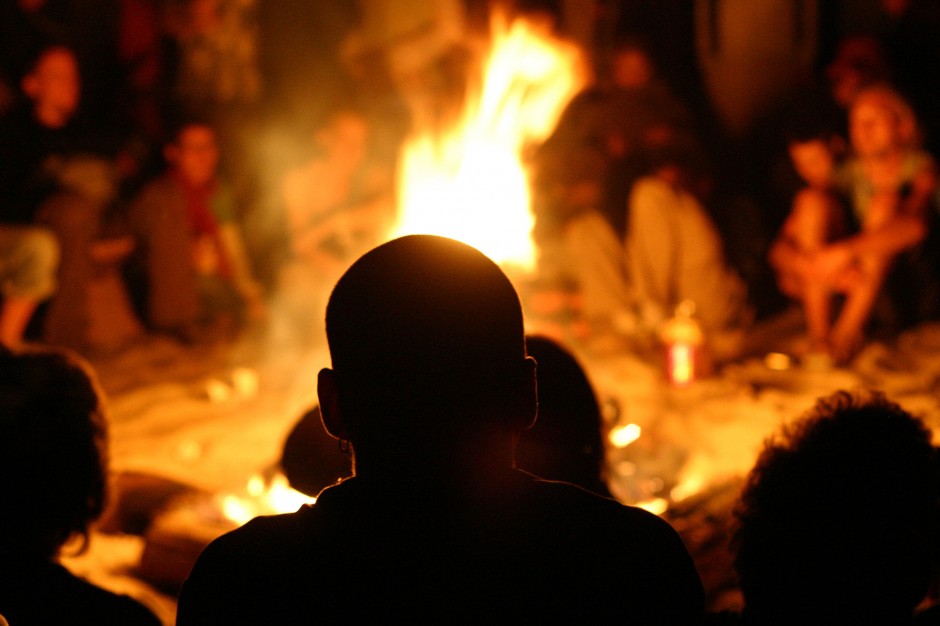
We lit Hanukkah candles and talked of a small tribe of people whose temple had been desecrated by foreign invaders but who nonetheless found the courage to rededicate themselves to their faith. That single act was the seed miracle for the miracle of light that followed, when a small amount of oil provided enough fuel to illuminate their sanctuary for eight nights.
We spoke too of communities across the Northern Hemisphere that have honored this darkest time of the year and welcomed the return of the light brought about by the Winter Solstice. Our ancestors of every ethnicity have celebrated the longest night and shortest day of the year in various ways. Some construct elaborate holy spaces for use at this event; others assemble during the dark of night to sing and hum as the sun rises on the shortest day each year.

And everywhere, during the darkest times, people continue to gather and share stories, just as we were doing. Conveying our narratives, both the collective ones and the personal ones, is one of the most significant ways humans choose to find and create meaning in our lives. These tales form the foundation of who we are.
A traveler among our group that night gifted our circle with his own personal narrative, replicating a significant tradition in story-telling in which someone new to the circle brings wisdom from afar. Almost fifty years ago, he was one of a group of young men fighting in a war thousands of miles from their homes. On Christmas Eve, their very young leader gathered them together, drinks were passed, and cheer was shared. He invited each of them to tell about their personal holiday traditions; and one by one, these young men talked of family gatherings, of favorite foods, and of ancient rituals. Together, personal narratives from unique lives lived halfway around the globe were woven together in a collective tapestry.

And as we listened, we became part of that tapestry. We were there with those young men as witnesses to both that special Christmas Eve they created together and to each of the Christmases they were recounting.
I was not in the Vietnam War; I did not live through the Maccabbees’ miracle of rededication and finding the light. And my family of origin, which has relied on artificial light rather than on the sun alone for generations, does not gather together to sing the sun up on the shortest day of the year. So these stories may not be mine personally, but they become my stories when I consciously enter into them and allow myself to be formed by them. As part of our collective human narrative, they bring gifts of inspiration, faith, and grounding.
The young men gathered near the battlefield, the community rededicating themselves and their holy space after massive devastation – these are people joining to reaffirm through stories that the light can be found in the darkness. These narratives, like the Hanukkah candles and the campfire at the center of the circle, provide light and warmth during the darkest time of the year and during the darkest times in our lives. Like our native ancestors, as we share them, we are singing up the sun.

Would you like to join in our collective story-telling? Your stories — of darkness and light; of loss and transformation; of joy and sorrow; of life, death, and grief – are important. To tell them through The Way of Conscious Death, contact Amy at amyagape@thewayofconsciousdeath.com
The post Telling Stories in the Dark: Collective Narratives appeared first on The Way of Conscious Death.
]]>The post The Significance of Stories appeared first on The Way of Conscious Death.
]]> Earlier this month, I was honored to participate in Naropa University’s Compassionate Approaches to Aging and Dying Conference (to learn more about this event and be informed of similar ones in the future, visit: https://www.eventbrite.com/e/compassionate-approaches-to-aging-and-dying-transforming-the-paradigm-of-care-tickets-30228980695#). I gathered with others — end of life workers, caregivers, scholars, and spiritual practitioners — who in various ways devote their lives to death and dying. So much wisdom was shared that weekend; and the vast majority of it arose in the form of storytelling. Indeed, each question raised during every question and answer session I attended contained a story in some form. Those sharing may have thought they were providing contexts for their inquiries, and the tales they told did offer frameworks for their queries.
Earlier this month, I was honored to participate in Naropa University’s Compassionate Approaches to Aging and Dying Conference (to learn more about this event and be informed of similar ones in the future, visit: https://www.eventbrite.com/e/compassionate-approaches-to-aging-and-dying-transforming-the-paradigm-of-care-tickets-30228980695#). I gathered with others — end of life workers, caregivers, scholars, and spiritual practitioners — who in various ways devote their lives to death and dying. So much wisdom was shared that weekend; and the vast majority of it arose in the form of storytelling. Indeed, each question raised during every question and answer session I attended contained a story in some form. Those sharing may have thought they were providing contexts for their inquiries, and the tales they told did offer frameworks for their queries.
But they delivered so much more.

We often rush through the process of telling our stories, considering them the preamble to the “real stuff”, as at the conference. Other times, we hurry to “fill one another in” on the occurrences of our lives, not realizing that the telling and the hearing is just as important as the content. I am blessed to companion others in my Spiritual Direction practice; and frequently a person I am supporting says something to me like, “I know I’m going on too long” or “I want to finish this story part so we can get to the work”. But so often the gifting and receiving of our story is the work, not only in Spiritual Direction but in life.
I think that we sometimes get confused about the purpose of stories. We may treat them as entertainment, leading us to believe that we must amuse or at least interest one another. Stories can certainly do that; and I suppose that entertainment is sometimes the sole purpose of storytelling.
. . . but not often.

Sharing stories is integral to our personal and collective growth and to our bonding with one another. We tell stories to:
- Create order from chaos
- Understand events and people
- Connect with one another
- Be witnessed in our joy and pain, our triumphs and challenges
- Ensure that we may someday be remembered
I received a LinkedIn message from a stranger recently. “You seem to be in love with words,” I read. The conversation that ensued is its own hilarious story – one I love sharing with others and will likely write about here someday. True, I love words. I love the way they convey meaning, and I love the ways they confuse and confound meaning. I love the way we use and misuse them. I love their sound, their rhythm.

But, much more importantly, I love their use in stories. It is, you see, the stories, with which I am in love rather than the words.
Stories have provided order, inspiration, and hope in my life. Occasionally, stories have even saved my life. My writing mentor, Mirabai Starr has taught me that when we tell our truth, we save the world. (for information on Mirabai’s writing, teaching, and retreats, please visit her website http://mirabaistarr.com/)
And as the end of our life draws near, most of us tell stories to tell our truth and to save the world. Unfortunately, we may not have many people present who are able to witness our stories with love and compassion.
At The Way of Conscious Death, we are committed to changing that.
We will be exploring stories deeply in 2018. We will provide education about how to share stories (with ourselves and those close to us) in our journeys with loss, illness, and grief; and we will learn how to witness another person’s story. We will share personal stories as well as stories from the collective (different communities, cultures, and societies – past and present). We will honor our grief through storytelling and story witnessing. There will be stories told with written word, others spoken on videos and podcasts. And we would like you to join us, to listen in, witness, connect, remember. Please also consider sharing your stories with us. Contact Amy at amyagape@thewayofconsciousdeath.com if you have a story to share.

The post The Significance of Stories appeared first on The Way of Conscious Death.
]]>The post Contemplative Practices and Conscious Dying VI: Kenotic Practices appeared first on The Way of Conscious Death.
]]> Years ago, I was traveling on a bus in Mexico with friends from my spiritual community. Sitting quietly, doing my morning practice, I began to have a surprising experience. I felt as though I were being filled with something and then emptied out; this process continued for the duration of the bus ride in a continual dance of filling and emptying. And throughout it I encountered state changes, unitive experiences, feelings of fullness and of emptiness. There was nothing I was doing to make this happen; and although I did not have words for what was occurring I knew I was being shown something.
Years ago, I was traveling on a bus in Mexico with friends from my spiritual community. Sitting quietly, doing my morning practice, I began to have a surprising experience. I felt as though I were being filled with something and then emptied out; this process continued for the duration of the bus ride in a continual dance of filling and emptying. And throughout it I encountered state changes, unitive experiences, feelings of fullness and of emptiness. There was nothing I was doing to make this happen; and although I did not have words for what was occurring I knew I was being shown something.
I was not a novice in the practice of energy transmission. Having been trained in the Vajrayana tradition of Buddhism by my beloved lama and having studied very closely with a shaman, receiving transmissions from both of them, I recognized the method. I knew very well the process of opening myself in order to become a channel through which could flow particular energies. For years, I had received such transmissions, and I had given them.
In addition, though, I recognized this particular energy, this feeling; indeed, it had been with me my entire life. What I could not comprehend during that trip was that I not only was being instructed in some new process, but I also was undergoing an initiation of sorts. I was being shown a kenotic practice, although I would not learn to call it that for many years.

Kenosis refers to the self-emptying movement of surrender. Derived from the Greek ekenosein (εκενοσεν), this term is found in Philippians 2:7 and refers to Jesus allowing himself to be emptied. This term signifies a very specific energetic movement taught and transmitted by Jesus (and others) and available to all humans regardless of religion or training.
All wisdom traditions teach the necessity of surrender, but rarely are we instructed on how to do it. Surrender is not something we can ponder, not something to be imagined. It only exists as an action, an action at the center of every religion, every spiritual convention.
Surrender is the entire dying process. At each moment in our lives, we are given the opportunity to release and surrender. And each time we accept that opportunity and use it, we are practicing for our eventual final act of surrender, the moment when the Angel of Death reclaims the very last bits of what we have borrowed from her during these magnificent lifetimes.
The most difficult aspect of dying is allowing ourselves to die, surrendering to the death that is occurring already. And in my experience it can be even more challenging in metaphysical and metaphoric deaths. Each time my body has been dying, I have been unable to hide that reality from myself and others for any period of time. My body then actually supports my dying process. As I witnessed in my spiritual communities, death practices can only take us to a certain place; they can provide the atmosphere of death or the practice of death. Amazingly, those of us who are dying physically actually may have an advantage over those who inhabit healthy bodies, because our physical forms themselves aid in the process of surrender.
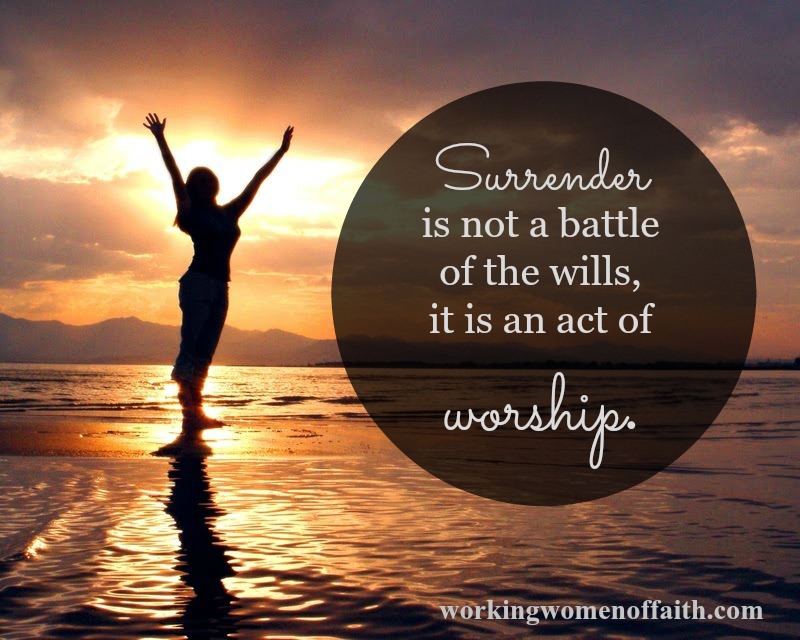
Kenotic practices tie all of our work with conscious dying together. They become a way of living as we die, a way of dying as we live. And any practice can be kenotic, as long as it involves surrender. When we have a state change through an Illuminative Practice, we are surrendering whatever state we leave. In Purgative Practices, we surrender our ability to control the physical, emotional, and mental sensations we encounter as we become more present to them and allow them to work on us. And Unitive Practices require us to surrender our sense of “me” as we experience union with some “other”.
Kenosis is the dance amongst all of these. Frequently, during my death journeys I have found that I can be in an Illuminative state one moment then pulled into something Purgative the next. I may feel intensely isolated with one exhalation and at one with everything with the following inhalation. My capacity to surrender every experience as it passes has increased greatly as I have worked with Kenotic Practices. And I have found this invaluable in my work with Conscious Death and Dying. Indeed, during my last encounter with death, two years ago, I felt as though I were being called to surrender moment by moment every single day.
Any practice can be a Kenotic Practice if we perform it kenotically – that is, if we use it as an act of surrender. In fact, it isn’t actually the practice itself that is Illuminative, Purgative, or Unitive either; rather it is the stance we take when performing the practice. Any act or glance can be unitive if we are using that lens, just as anything can be Purgative or Illuminative. And every single day we have a multitude of opportunities to surrender to something — to allow ourselves to be filled with a sensation, an emotion, an experience — and then to allow ourselves to be emptied of it entirely.

Kenotic Practices can be found in all traditions. Roshi Joan Halifax presents meditations both for the dead and for their loved ones, building on ancient Buddhist practices that are kenotic in nature. Her approach appears to be very similar to the ancient Christian tradition as well as to her Buddhist teachings:
“In the passage from life to death, what you will go through is not a story, or an idea that is somewhere ‘out there.’ Your old identity is thrashed like grain, and a new life may grow from the brokenness of your past and the breaking open of the present. Dying and being with dying are threshold experiences with the potential to destroy our self-clinging as they liberate us into a larger space.”
Questioning the idea of a “good death”, Halifax urges us to release all expectations and programs for our dying and to instead embrace the mystery, so that even our ideas about death are surrendered in a kenotic fashion. “Wise dying” is a term she utilizes, signifying the dying person’s “metacognitive perspective on the experience of dying itself”, not being in reaction to death and the events encountered during the dying process but being with them. This is very significant for our work. Her abundant practices lead us through contemplations of our dissolution, as well as of physical, social, relational – and ultimately spiritual and existential – dimensions of death. The latter, she notes, cannot be touched unless we have learned to be with the former. So she is guiding us, then, to release our experiences of life as we prepare for death.

This is not nonattachment or detachment. Rather the movement of Kenosis is more fluid and less controlled by us. It involves opening and allowing experiences, thoughts, sensations, even life to fill us up and flow through us. We fully engage, then we fully release. I imagine the movement to be like holding sand tightly in my hand, feeling its fullness against my palm and fingers, and then, whenever instructed, letting it flow through my fingers.
The Kenotic Practice I use daily is Centering Prayer, which is based on an ancient Christian tradition and updated for contemporary practitioners. It is a very simple – and exceedingly challenging – practice of continual surrender. Cynthia Bourgeault’s new work on Centering Prayer indicates that this ancient way of praying, the prayer of surrender, actually changes what she calls our “operating system” by moving our focus into our hearts. Over time, it shifts not what we see, but how we see. The lines of division between me and you, subject and object, ill and well – even life and death – can then disappear.
“Live like you are dying” seems almost cliché in our world; it is a phrase often repeated in eulogies and heard in country western songs. The truth is that kenosis is a practice to be integrated throughout our lives, not just found at the moment of death. What those who follow a wisdom path have always known; what the great sages came to teach, model and share with us; and what every culture tries to “recover” is this essential truth: if we live a life of surrender, death is no surrender at all.
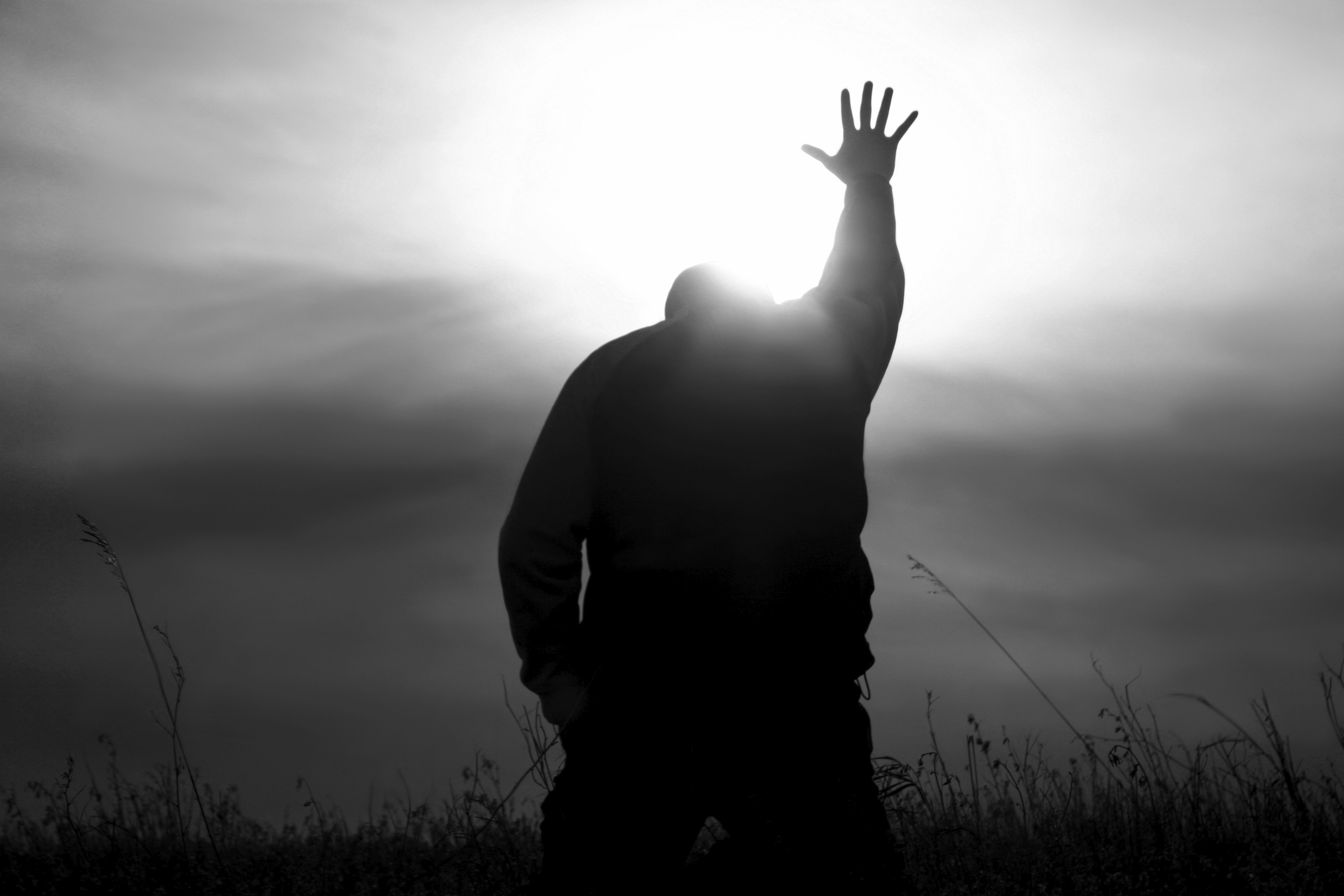
Some Helpful Resources
Bourgeault, C. (2004). Centering prayer and inner awakening. Cambridge, MA: Cowley Publications.
Bourgeault, C. (2016). The Heart of Centering Prayer: Nondual Christianity in Theory and Practice. Boulder, CO: Shambhala.
Frenette, D. (2012). The path of Centering Prayer: Deepening your experience of God. Boulder, CO: Sounds True.
Keating, T. (1986). Open mind, open heart: The contemplative dimension of the gospel. Amity, NY: Amity House.
Keating, T. (1994). Intimacy with God. New York, NY: The Crossroad Publishing Company.
Keating, T. (2001). The divine indwelling: Centering Prayer and its development. New York, NY: Lantern Books.
Keating, T. (2010). Invitation to love: The way of Christian contemplation. New York, NY: Continuum International Publishing Group. (Original work published 1992).
Some Kenotic Practices
Centering Prayer
Surrender This . . . and This. . .
. . . keep coming back. . . we will add descriptions of these and other Kenotic Practices soon. . .
The post Contemplative Practices and Conscious Dying VI: Kenotic Practices appeared first on The Way of Conscious Death.
]]>The post Contemplative Practices and Conscious Dying V: Unitive Practices appeared first on The Way of Conscious Death.
]]>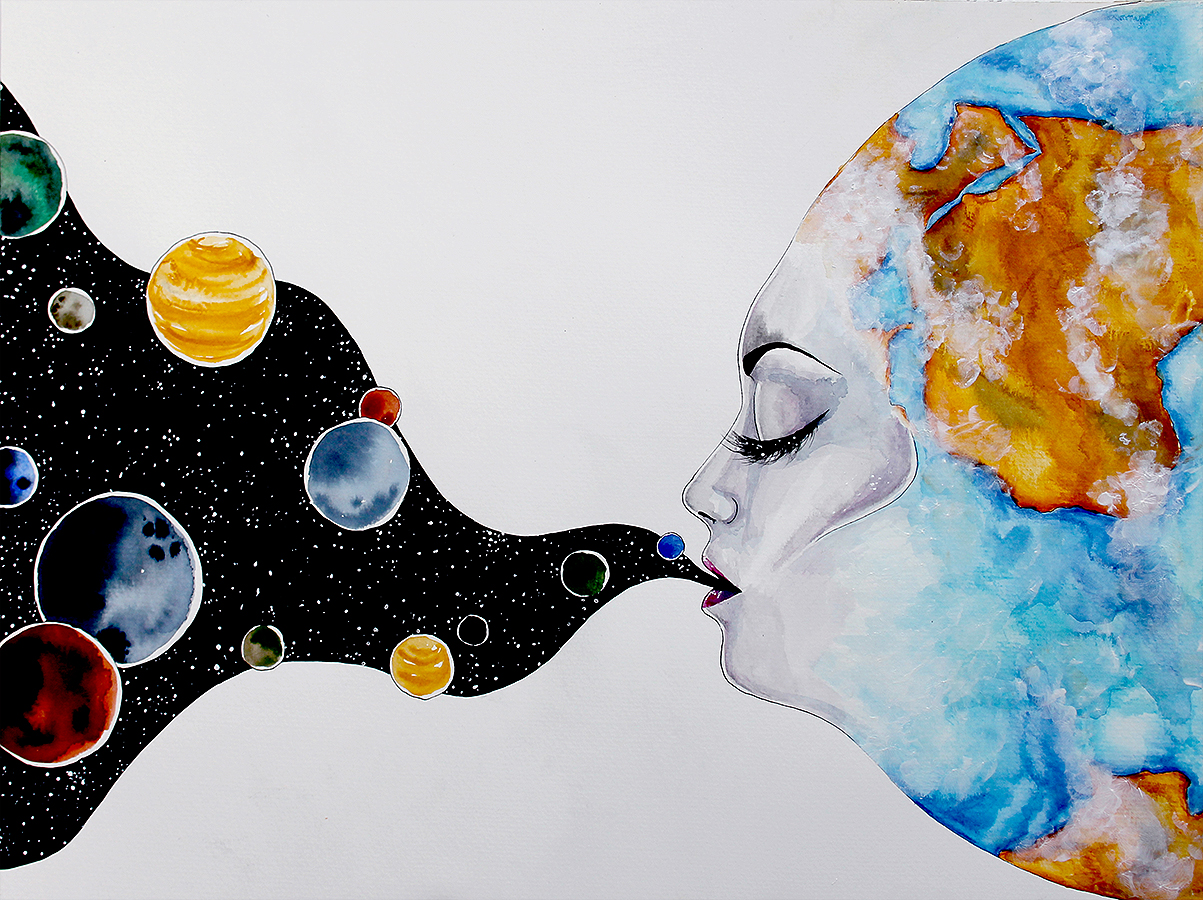 “Well. . . if you were my wife,” my young doctor began to answer my question. Faced with a challenging decision, I had asked, “If you were me, what would you choose?” But he was not able even to imagine being me; the closest he could approximate was envisioning his wife as me.
“Well. . . if you were my wife,” my young doctor began to answer my question. Faced with a challenging decision, I had asked, “If you were me, what would you choose?” But he was not able even to imagine being me; the closest he could approximate was envisioning his wife as me.
This is not unusual. Throughout my journey with chronic, serious illness I have had countless experiences of feeling just how different the people around me – doctors, nurses, friends, family members – may perceive themselves to be from me.
And my guess is that each of us has distanced ourselves in many ways from some of the people for whom we care. We do this as End-of-Life workers, we do this as beloved family members, and we do this as close friends.

Often, the distinction between “me” and “you” is absolutely necessary to maintain. A nurse must measure my blood pressure and not her own. My doctors perform tests and procedures on this body, not another. Furthermore, it is not helpful for us to assume we know what a dying person is encountering. No matter how similar our experiences may be to theirs, we are not encountering what they are in this very moment.
But one of the strongest – and most painful — dualities that we encounter as we are dying is the division between ourselves and those around us.
Dying is lonely. With a terminal diagnosis, we often are distinguished as “other” and segregated from our families, communities, and cultures. The immediate feeling I had upon receiving my first diagnosis was is one of being pushed outside — outside of my normal situation, outside of my social structure. This process of dying always seems to include separation from our communities, from our roles within our families, from our self-identity, from our good health, from our dreams for the future. Each of these feels ripped out of our hands. Particularly in a world where young, fit, and healthy seem to be the only acceptable ways to be, we can become immediate outsiders once we are labeled by our status as terminally ill.
Regardless of all the support systems we may have and the companions who walk alongside us during these death walks, we each ultimately must journey this path alone.
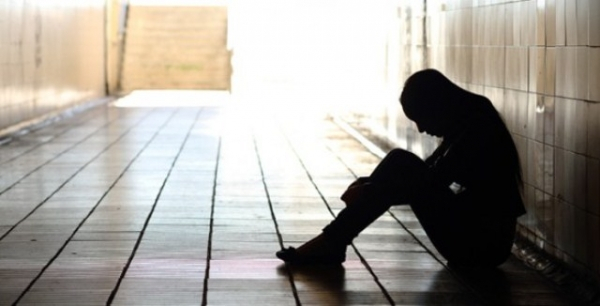
Likewise, our actual experience of aloneness can be particularly agonizing, whether that separation is physical, such as during the endless nights we may spend isolated in a hospital room, or emotional, as when ones we love distance themselves from us out of fear. With each of my death journeys, this feeling of being ostracized, of being marked an outsider, is often more painful than are my physical symptoms.
During my second journey with dying, I felt more isolated than I have at any other time in my life. On a communal level, part of what may have created some of the pain and anguish I experienced during this death walk was a lack of support. Treated by my hometown obstetrician and gynecologist, I found myself repeatedly trying to explain my medical condition to them. With no local specialized cardiologist in the field of adult congenital heart disease, I had no professionals in my life who understood the complexity of my experience. So I often felt unheard, even by those responsible for my care. In addition, I did not seek support from anyone in my personal life either. Not wanting to burden them during this time when we were all celebrating the birth of my daughter, I hid from them the severity of my condition, which led to further feelings of isolation. I feel quite certain that this period of self-induced seclusion significantly affected my experience during this dying process.
This sense of separation is actually vital to the process of dying consciously. Awareness and comprehension of all the levels of separation involved in surrender are fundamental to the route of surrender. When we begin each lifetime, there is a way that we are part of a system even before our birth. We are born into community; indeed, community is something that most of us have before we have any sense of it. It therefore becomes a significant background to who we are. In order to release everything in this lifetime consciously, there must be some separation.
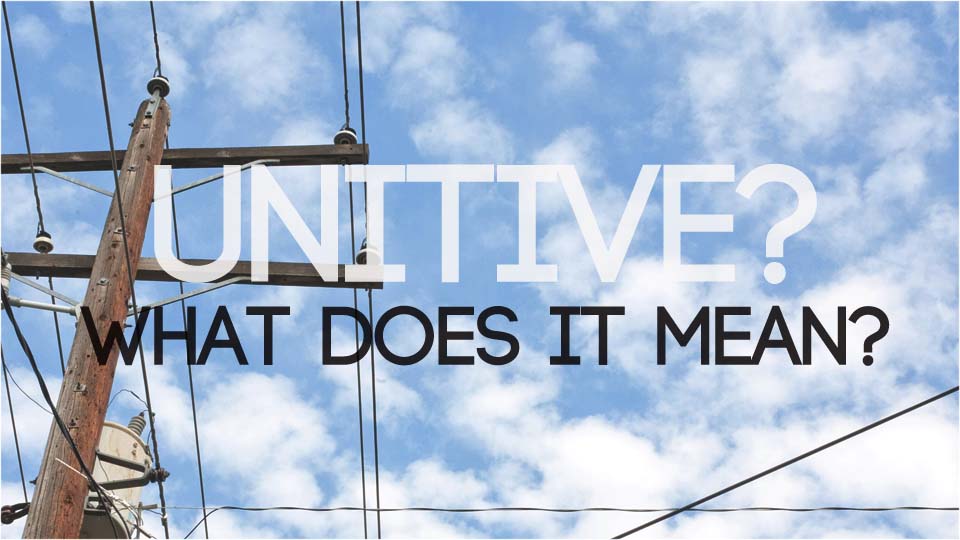
The distinctions created by physical form are real and significant. And they are not the entire truth. The bigger truth is that all life is connected in some beautiful, elemental way. The extinction of one tiny form of insect can affect harvests throughout the world. Thich Nhat Hanh teaches us that in a single piece of paper exists not only the tree from which is was made but the cloud that produced the rain and the sun that joined with that rain to help the tree to grow. On a intimate, personal level, the air I breathe as I lie in my hospital bed flows into my doctor’s lungs and becomes part of her body.
For many of us who are dying, encounters of union become more frequent, strong, and poignant. . . at the same time as experiences of separation are acutely known and felt.
We can feel when those around us are open to us in ways that inspire union; and we become intensely aware that someone is keeping himself/herself closed from experiencing union with us. There is a big difference between someone who is truly there with us and those who distance themselves from us by maintaining lines of division.
And we can feel the separation. When those taking care of us have opened to union – either through spiritual practice or just through the act of being a human and occasionally welcoming the unitive possibilities around them, it feels different to us.
All wisdom traditions talk about union, but how can we actually experience it?
This is not about establishing a connection through stories and information – through words at all. Rather this union is something we experience when we open to the world around us. We are walking at sunset, and suddenly that gaze into the horizon is a portal through which the horizon, the sunset, and our body all seem to disappear into a cohesive oneness. We look into a baby’s eyes or those of our beloved, and the lines between “us” and “them” are erased. The more we allow ourselves to be vulnerable to experiencing the union that is already here, the more accessible these experiences may become.

In order to be open to experiencing union with people who are dying, it is helpful to have done our own Illuminative and Purgative work (and to continue to do this work throughout our lifetimes). Just as with Illuminative and Purgative work, Unitive practices do not make anything happen. I can decide to experience oneness with the flower in my garden, sit in front of it for hours, and not encounter any sense of union at all. With these practices, what we are doing, rather, is positioning ourselves so that we may be ready to receive the grace of union.
Perhaps what I was seeking from my young doctor so many years ago was not more information. What if, rather than discussing my situation with words, we had paused and just felt the truth of the interconnectedness between everything, the union that existed throughout and all around him with his stethoscope and me with the frightening-sounding heartbeat? Maybe what I needed was to not feel alone.
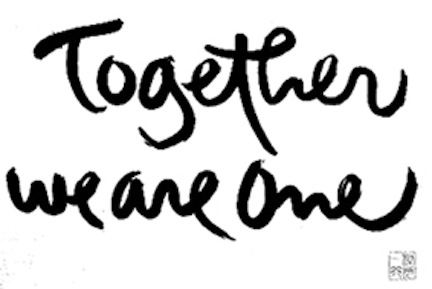
Some Helpful Resources
Byock, I. (2004). The four things that matter most: A book about living. New York, NY: Free Press.
Childre, D. (2000). The HeartMath Solution: The Institute of HeartMath’s revolutionary program for engaging the power of the heart’s intelligence. New York, NY: HarperOne.
Halifax, J. (2008). Being with dying: Cultivating compassion and fearlessness in the presence of death. Boulder, CO: Shambhala.
Halifax, J. & Simon, T. (2011, May 3). Being with Dying. Insights at the edge podcast.
Levine, S. (1984). Meetings at the edge: Dialogues with the grieving and the dying, the healing and the healed. New York, NY: Anchor Books/Doubleday.
Nouwen, H. (1994). Our greatest gift: A meditation on dying and caring. San Francisco, CA: Harper San Francisco.
Ostaseski, F. (2017). The five invitations: Discovering what death can teach us about living fully. New York, NY: Flatiron Books.
Some Unitive Practices
Tonglen
“One”ing
Metta
Connecting from Belly and Heart
. . . keep coming back. . . we will add descriptions of these and other Unitive Practices soon. . .
The post Contemplative Practices and Conscious Dying V: Unitive Practices appeared first on The Way of Conscious Death.
]]>